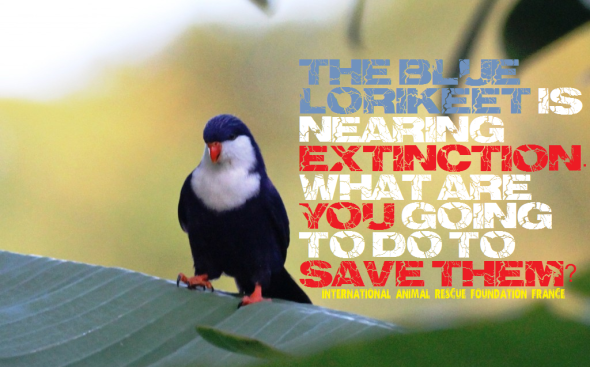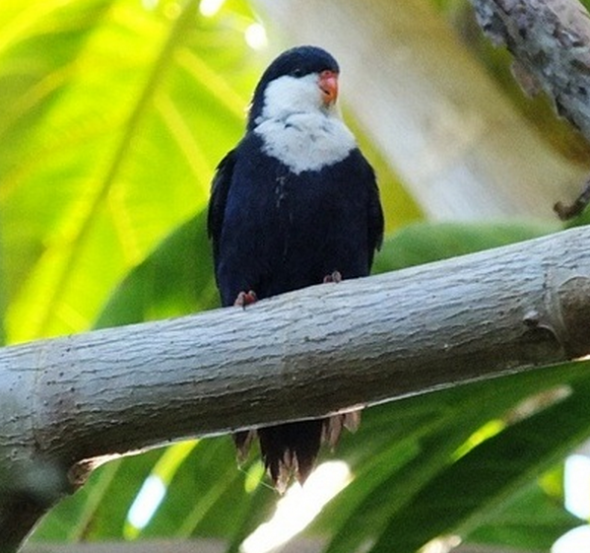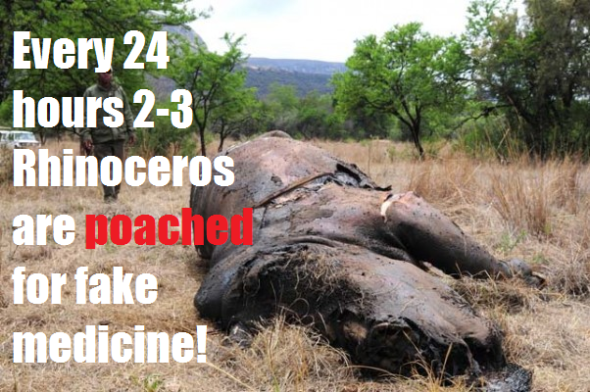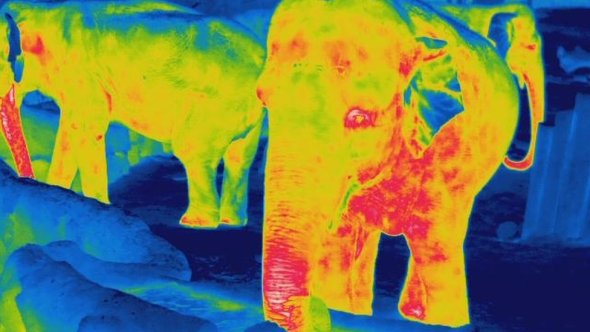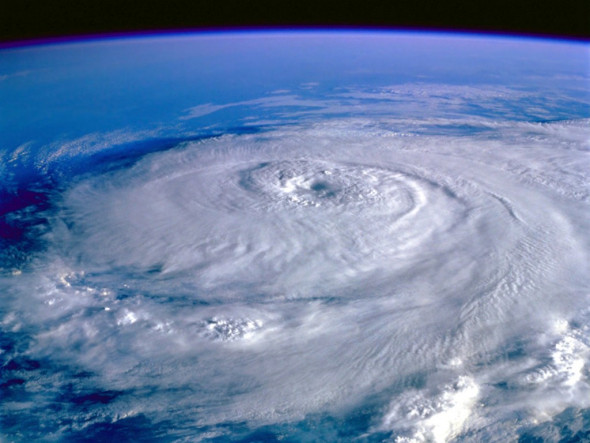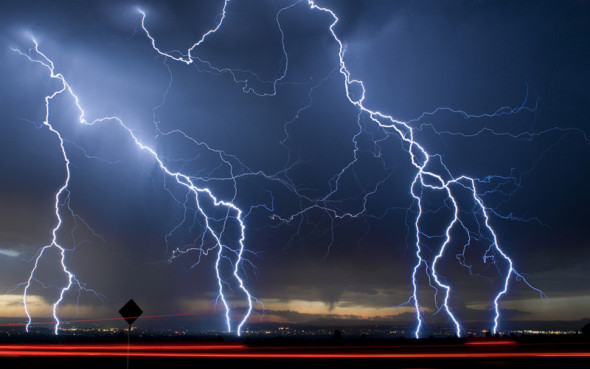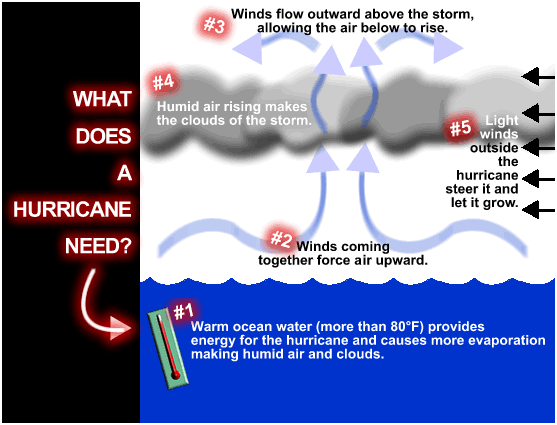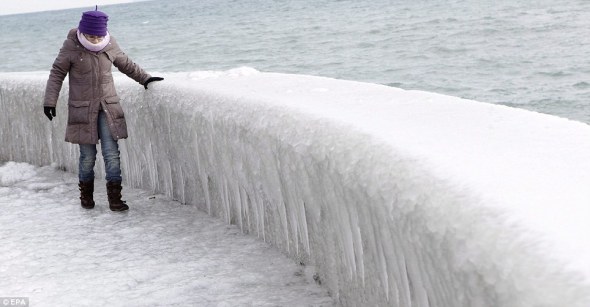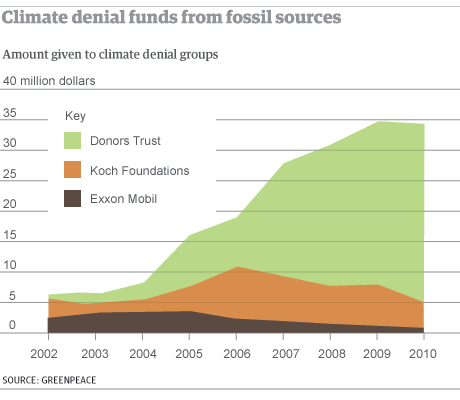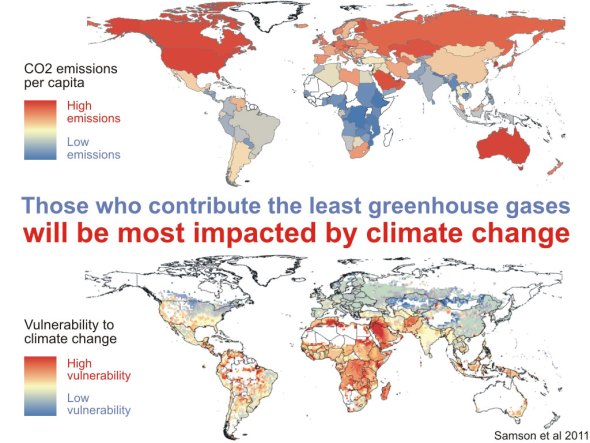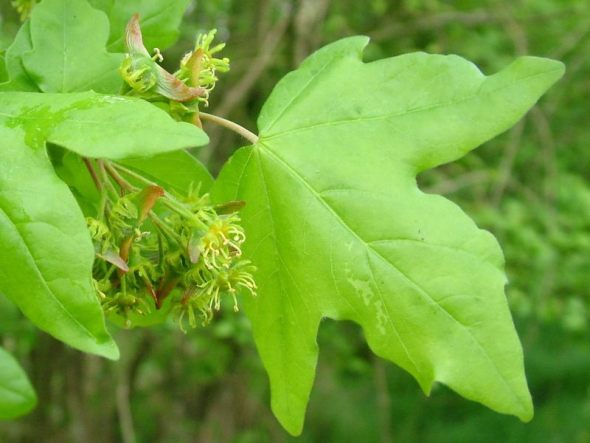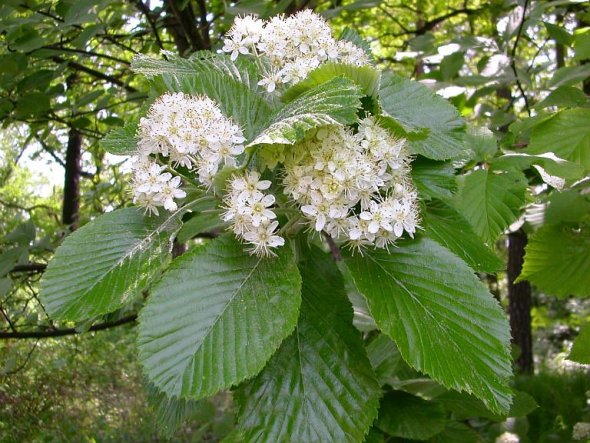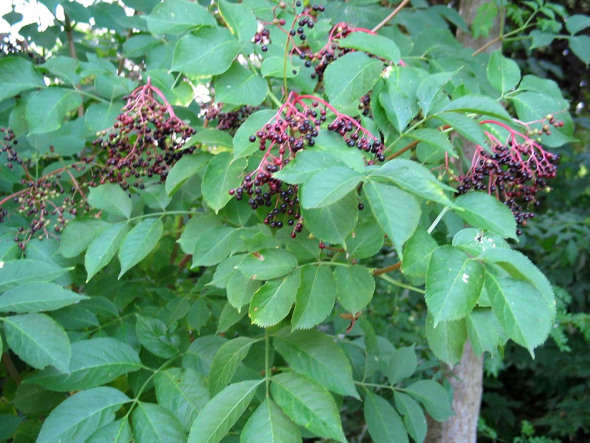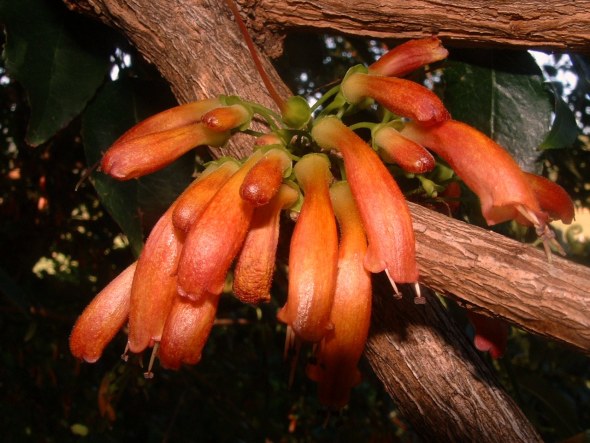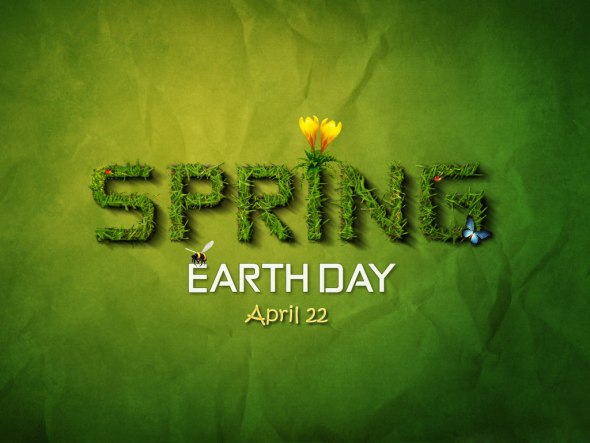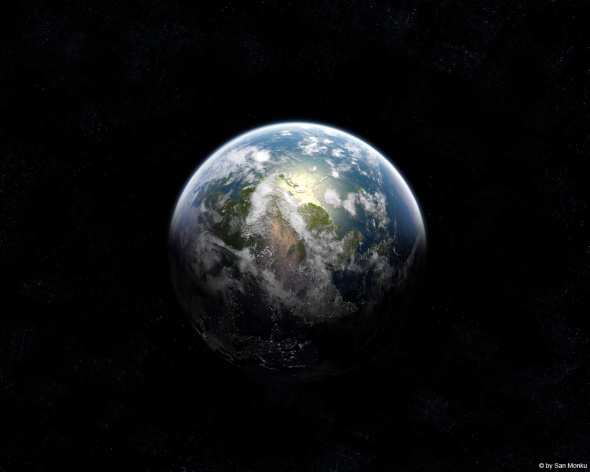ENDANGERED SPECIES FRIDAY: PTILINOPUS CORALENSIS | ATOLL FRUIT DOVE.
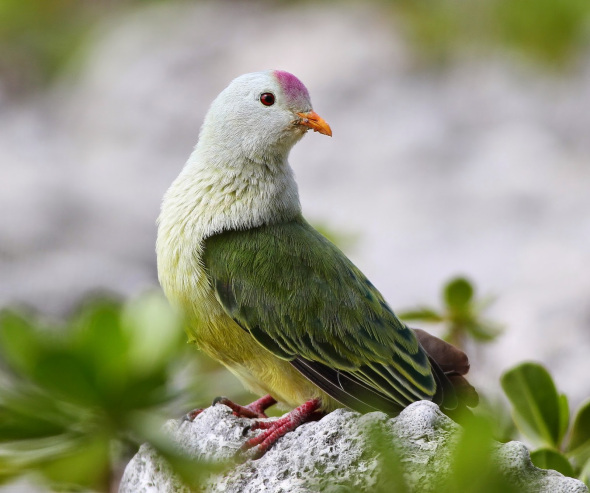
ENDANGERED SPECIES FRIDAY: PTILINOPUS CORALENSIS | ATOLL FRUIT DOVE
This Friday’s Endangered Species Post brushes up on a species of bird that many of you may never have heard of. The atoll fruit dove, that’s listed as (near threatened) is unfortunately nearing extinction within its endemic wild. Image: Atoll Fruit Dove, credits, Steve Smith.
Endemic to French Polynesia, the species was formally identified back in 1848 by Dr Titian Ramsay Peale (November 2, 1799 – March 13, 1885) who was an American artist, naturalist, entomologist, and photographer. He was the sixteenth child and youngest son of noted American naturalist Charles Willson Peale. He is sometimes referred to as Titian Ramsey Peale II to distinguish him from his older brother with the same name who was a favorite of their father and who died at age 18 in 1798.
From 1988 the atoll fruit dove was previously listed as lower risk/least concern, data from that period showed no reasonable justification for the bird to be listed as threatened due to the species being heavily populated throughout the French Polynesia islands. Unfortunately things have drastically changed since the the late 1980’s. French Polynesia is now home to many French and non-French citizens, all of which are gradually threatening the atoll fruit doves habitat - and many other animals too.
Data records prove that from the 1980’s right through to the new millennium the species did live a pretty undisturbed life. However come 2004 the atoll fruit doves habitat and their existence took a turn for the worse. From 2004-2016 the species was (re-listed as near threatened). Populations are still decreasing, and from what we are aware of to date, there has been no official records kept that can prove the current population size which we do find rather strange. French Polynesia isn’t exactly your largest island on the planet.
What does near threatened mean though? Below I’ve extracted a paragraph from the International Union for the Conservation of Nature that will help you understand more about this ‘category‘.
“A taxon is Near Threatened when it has been evaluated against the criteria but does not qualify for Critically Endangered, Endangered or Vulnerable now, but is close to qualifying for or is likely to qualify for a threatened category in the near future“
Scientifically identified as Ptilinopus coralensis, the species is widespread throughout the islands of the Tuamotu Archipelago, French Polynesia. It is likely to occur at low densities throughout its range as its preferred food resources are scarce. In a recent survey it was found to be uncommon on five out of eight islands visited, but others have found it to be abundant on some atolls which have remained free from the ravages of introduced predators.
Scientists haven’t as located any ‘sub-populations’, however have confirmed that there is a ‘continuous decline of mature individuals on the island examined’ however as yet we still don’t know to what extent other than a 30% drop in populations have been recorded.
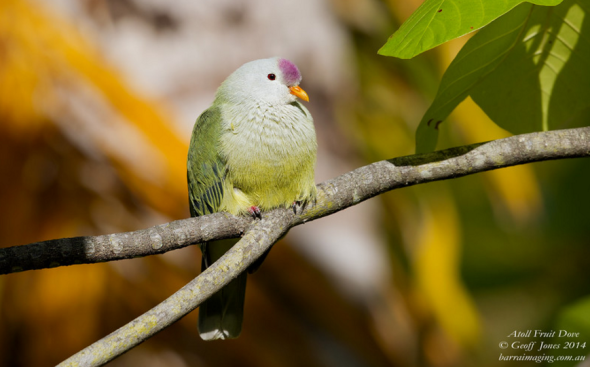
Image: (Google Image Search): Atoll fruit dove (Credits: Geoff Jones 2014)
The atoll fruit dove is the world’s only dove in the tropical Pacific that has adapted exclusively to low coral atolls. It lives in forests and abandoned coconut plantations. It mainly feeds on insects and seeds, usually on the ground. This species also eats the leaves of the “tafano” or “kahaia” (Guettarda speciosa ) trees with odorous flowers.
THREATS
Predation by introduced rats (particularly black rat Rattus rattus) is a threat on a small number of atolls and the species is vulnerable to habitat destruction including the exploitation of coconut plantations. The species is also reported to be rather tame, and is rare on inhabited islands, so hunting may also be a threat.
Although the species is commonly known throughout the French Polynesian islands - there is still to date very little known about the bird. The issue with coconut plantation/exploitation has always been somewhat of a concern for myself and the team. In a sense its no different to be honest than the palm oil trade (however in this case, its coconut farming that is placing the species in danger to some extent!).
I am working with a number of conservationists on the French Polynesia islands that are keeping me updated on this issue overseas, as well as the cruel and barbaric dog and cat meat trade. For now our main priority is to ensure that we undertake a census in relation to the current atoll fruit dove population, examine the threats, and work how to minimize them threats (Etc).. ..Unfortunately though I cannot provide any further up to date information relating to this bird and whether the specie will be extinct soon.
Dr Jose Carlos Depre: PhD. MEnvSc. BSc(Hons) Botany, PhD(NeuroSci) D.V.M
Master of Environmental, Botanical & Human Science.
Chief Environmental Officer and CEO.
Endangered Species Monday | Brachylophus fasciatus.
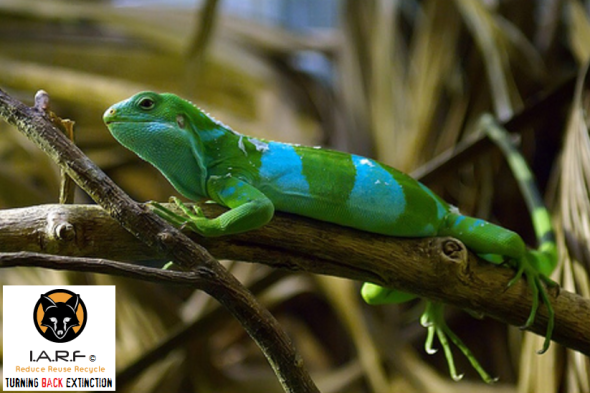
Endangered Species Monday | Brachylophus fasciatus
This Monday’s (ESP) Endangered Species Watch Post report I document on a rather “undocumented species” of iguana identified back in the 1800’s. (Photographer unknown)
Identified back the 1800’s, and listed as [endangered] the species was originally identified by French Dr Alexandre Brongniart (5 February 1770 – 7 October 1847) who was a French chemist, mineralogist, and zoologist, who collaborated with Georges Cuvier on a study of the geology of the region around Paris.
Dr Alexandre Brongniart was born in Paris, the son of the architect Alexandre-Théodore Brongniart and father of the botanist Adolphe-Théodore Brongniart. He was an instructor at the École de Mines (Mining School) in Paris and appointed in 1800 by Napoleon’s minister of the interior Lucien Bonaparte director of the revitalized porcelain manufactory at Sèvres, holding this role until death.
The young man took to the position a combination of his training as a scientist— especially as a mining engineer relevant to the chemistry of ceramics— his managerial talents and financial acumen and his cultivated understanding of neoclassical esthetic. He remained in charge of Sèvres, through regime changes, for 47 years.
Commonly known as the Fiji Banded Iguana, Lau Banded Iguana, South Pacific Banded Iguana, or Tongan Banded Iguana the species is unfortunately endangered and nearing extinction within the wild. A reptilian, and member of the iguana family the species has been placed within the order of (Squamata).
Within the past TWO DECADES the species has undergone a decline of some 50% throughout its range. Furthermore species declines are still ongoing with no apparent let up neither, (threats have been noted as significantly severe and widespread).
Without conservation intervention, the degradation observed during the last 20 years is predicted to cause further declines over the next 20 years that approaches 80% and potentially will be found to be even higher with further population analysis. Basically unless conservation efforts are improved or continue then we will lose the species very quickly.
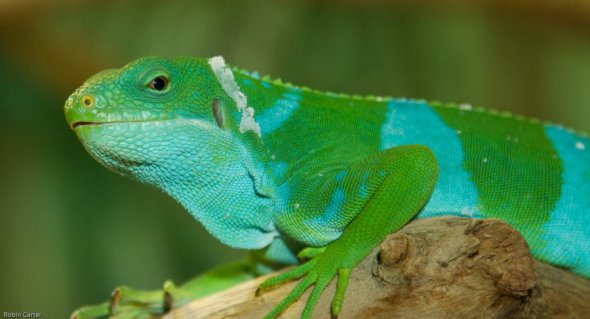
Image: Fiji Banded Iguana (Credits: Robin Carter)
Now to some humans this may not seem much to worry about. However let me ask you this. Have you experienced a rather large number of flies bothering you, mosquitoes, insects, and general bugs wreaking havoc with your everyday life? If the answer is “yes”, then maybe you need to be paying attention to my articles. Reptiles loves flies, and without reptiles there will be more flies.
Endemic to Fiji, the species has recently been introduced to Tonga. Among all the islands surveyed for the presence of Lau Banded Iguana, only on the two Aiwa Islands were enough lizards found to estimate a population size, this was estimated to number less than 8,000. That population size is concerning (especially when we take into consideration life span, gestation, and threats). 8,000 can soon turn into 1000 in under five years.
Although there is no official “population size estimates”, its believed from census reports (which I myself do question), within the past 35-40 years the species has undergone (as explained above) a decline of 50%. Discussions with island residents indicate that on most islands the iguanas are now more rare than they had been in the recent past.
Most islands in the region are now inhabited and iguanas were generally found in degraded forests or remnant forest patches, but not in proximity to villages or gardens. Surprisingly, among the uninhabited islands surveyed only one was found to have iguanas present, but this is likely due to the abundance of cats present on the iguana-free islands. It is known that local residents intentionally translocate kittens to these uninhabited islands for rat control.
In summary, a total of 52 islands in the Lau Group and Yasayasa Islands were visited between 2007 and 2011 and iguanas were detected or reported from only 11 islands, with an additional report from one island that was not visited. The sheer fact we only have on ELEVEN ISLANDS instead of FIFTY TWO Fiji Banded Iguanas, just goes to show we have serious problems here that need addressing before its to late.
Iguanas were abundant on only three islands, the two neighbouring Aiwa Islands and Vuaqava, all of which are uninhabited. Goats have recently populated all three of these islands and Vuaqava has a seemingly large cat population (which could be a threat). Most of these 53 islands should have had resident iguana populations. For example, two islands with historic populations, Moce and Oneata, were described by the Whitney Expedition and have since been extirpated. Given these results, it appears that iguanas could be remaining on about 20% of the islands in the region and are abundant on only 5%.
“SO WHAT ARE THE THREATS?”
The current band at which the Fiji Banded Iguana sits in (in regards to known population levels) is 8,000 120,000 mature individuals. Now that doesn’t mean we have 8,000 or 120,000 mature individuals. The current band basically means what we have “assumed the population” based on very sketchy and rough census estimates. What we do know, is that from the last census conducted only 8,000 were eye balled (meaning that 8,000 were physically witnessed). Further census counts are underway.
Lau Banded Iguanas are sometimes locally kept as pets, and this was observed on three different islands during surveys in 2011. Historically, these iguanas would have been a local food source, similar to the larger extinct species (Lapitaiguana and B. gibbonsi) in the region, but there are no recent records of human consumption. The black market trade in Brachylophus does not include this species and is unlikely to be a threat in the future as its remaining localities are very remote.
Black Rats (Rattus rattus) and feral cats (Felis catus) are the main mammalian predators threatening the persistence of iguanas and are capable of causing local extinctions in a relatively short time period. Fortunately, mongoose has not been introduced to the Lau Group yet, and maintaining it free of them is an important biosecurity issue. On a few islands, free-roaming domestic pigs (Sus scrofa) were observed to cause major disturbance in small forest patches, turning large areas to bare mud that is no longer suitable for iguana nesting.
Even in the absence of goat herding, forest burning is widespread and is increasingly one of the biggest threats to iguana habitat and their persistence. Continued deforestation on the small islands where Lau Banded Iguanas remain is predicted to cause additional local extinctions over the next 40 years. In particular, on the large islands of Lakeba and Vanua Balavu where iguanas should have been numerous, there has been significant forest loss through deforestation, burning, and fragmentation.
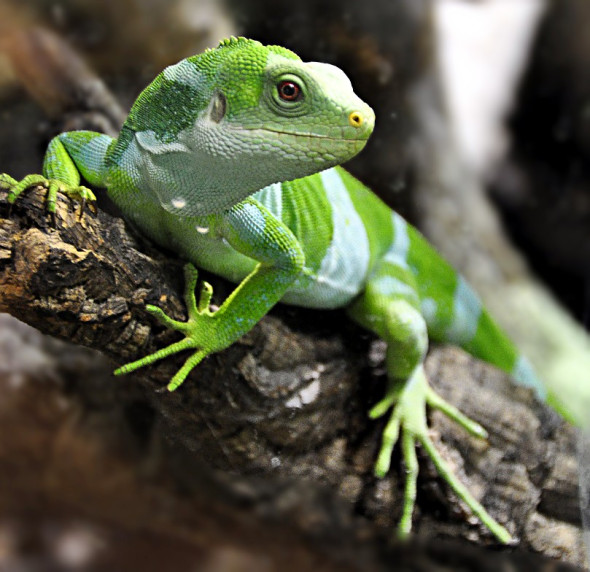
Image: Fiji Banded Iguana (Photographer unknown).
Additional threats to the native forests include further development of urban and village areas, plantation agriculture, and logging. In particular, harvesting Vesi Tree (Intsia bijuga) for use in traditional carving on several islands (for example, Kabara) has significantly reduced the native forest. Forest conversion to Caribbean Pine plantations is also significant, especially on Lakeba.
Proposed development of tourism resorts, on the smaller islands in particular, has significant impacts on these habitats, possibly leading to losses of entire iguana populations as has been observed elsewhere in Fiji. Finally, proposed new cruise ship routes to the remote Lau islands will require construction of new infrastructure and is likely to be a source of invasive species from Viti Levu unless strict biosecurity measures are enforced.
The impact of the recent introduction and spread of the invasive alien Common Green Iguana (Iguana iguana) in Fiji are not yet known for this species but have been shown to have significant detrimental effects everywhere they have been introduced. Eradication for this invasive now appears unlikely, and it is possible the Green Iguana will continue to spread to other well-forested islands despite eradication efforts. Green Iguanas are vastly more fecund and aggressive than native iguanas and may have significant effects on remnant small island populations.
At minimum, this introduction has caused considerable confusion in the local education programmes aimed at protection of Banded Iguanas versus eradication of the Green Iguanas, since juveniles of the latter appear superficially similar. The northern Lau Islands are very close to Qamea where the Green Iguana was first introduced and are at high risk of invasion.
Irruptions of invasive alien Yellow Crazy Ants (Anoplolepis gracilipes) are known to occur on many of the southern Lau islands. Even though these ants were introduced to Fiji over 100 years ago, it is not understood what causes populations to periodically irrupt in huge numbers on some islands. When Crazy Ants irrupt, the entire ground surface, shrubs, and trees are entirely covered with ants and it has been observed that native skink and gecko abundance drops greatly during this time.
The impact of aggressive ant irruptions on iguana reproduction and recruitment is not known, but is likely to suffer similarly to other lizards. Lau Banded Iguanas are sometimes locally kept as pets, and this was observed on three different islands during surveys in 2011 (as explained above).
Historically, these iguanas would have been a local food source, similar to the larger extinct species (Lapitaiguana and B. gibbonsi) in the region, but there are no recent records of human consumption. The black market trade in Brachylophus does not include this species and is unlikely to be a threat in the future as its remaining localities are very remote.
Listed as endangered, the current future is not as yet known. However what we do know is that the Fiji Banded Iguana does not inhabit the ground it once did. Threats are wide, and the species has undergone a large population decline.
Thank you for reading.
Dr Jose C. Depre PhD. MEnvSc. BSc(Hons) Botany, PhD(NeuroSci) D.V.M.
Environmental, Botanical and Human Science.
Endangered Species Friday: Macrotis lagotis | Bandicoot.
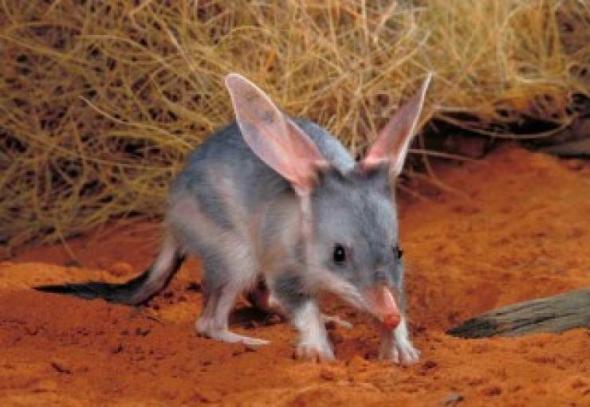
Endangered Species Friday | Macrotis lagotis
This Fridays (ESP) [Endangered Species Post] I touch up on the Macrotis lagotis, commonly known as the Rabbit-eared Bandicoot identified back in 1837 By Dr Reid. (Image credit unknown, explorer unknown).
The Rabbit Eared Bandicoot is the fifth Australian marsupial that I’ve documented on since establishing the (Endangered Species watch Post), covering now over 403 species of animals (worldwide) in exactly 5 years. From 1965 very little was actually known about the Rabbit Eared Bandicoot, despite the fact it was formally identified way back in the 1800’s.
Unfortunately when scientists eventually managed to re-locate the species, they found the animal was in fact nearing extinction within its endemic wild. Listed then as (ENDANGERED) the species almost went extinct from the 1980’s - 1900’s. Fortunately environmental scientists worked hard to preserve this rather unusual animal. From 1990 the species was still listed as (endangered - and nearing complete extinction within the Australian wild).
Fortunately from 1994-1996 species recovery programs increased populations within the wild. Come 1996 the species was re-listed as (vulnerable). Commonly known as the ‘bilby’, M. lagotis once inhabited some 70% of Australia. Wild populations are now restricted predominantly to the Tanami Desert (Northern Territory), the Gibson and the Great Sandy Deserts (Western Australia), and one outlying population between Boulia and Birdsville (south-west Queensland). The bilby has gone extinct from portions of southern Queensland within the last few decades.
However despite numerous conservation actions that have been aiding and increasing bilby populations, they are now on the decrease; slowly, but surely, for how long though is another story. Endemic to Australia (Northern Territory, Queensland, and Western Australia) its believed there are no fewer than 500 individuals on Thistle Island, 500 in Arid Recovery, 100 in Venus Bay, 200 in Peron, 40 in Scotia, 200-500 in Queensland.
There are fewer than 1,000 individuals in the Northern Territory and 5,000-10,000 in non-reintroduced Western Australia. The global population might be under 10,000 individuals. The species is wide-ranging and patchily distributed. The population estimates of bilbies in the Northern Territory and Western Australia are very approximate, as there are no published numbers in peer-reviewed journals. It is known from aerial surveys that bilby signs (diggings) in the areas where bilbies are persistent occur less than 15 to 20 km apart.
“TEN THOUSAND INDIVIDUALS REMAINING”
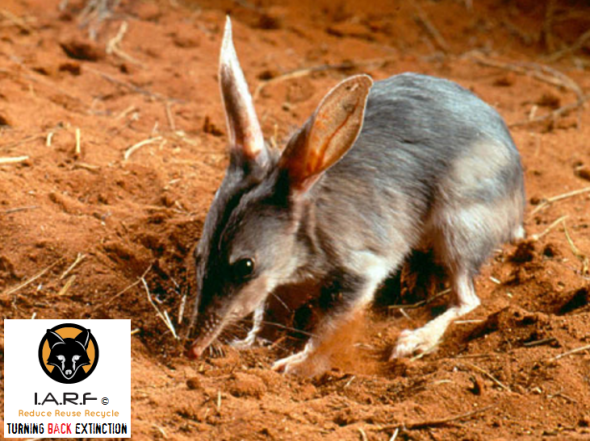
Image: Bilby, Australia. Photographer unknown.
Bilby populations are not known to be seriously fragmented, and from what I am aware the species is protected under CITES APPENDIX I (Convention on International Trade in Endangered Species of wild Fauna and Flora).
“WHAT’S WITH THE LARGE EARS?”
You’ll find that many small and even large animals that live within extremely arid and hot countries, and are active during the daytime will host large fan like ears. Without these large cooling like rabbit ears many species of animals wouldn’t be able to radiate heat away from its most important organs - being the brain. Smaller ears would most certainly result in the mammal dying from massive heat stroke, and dehydration. However due to the lack of research on the bilby, we still don’t know for sure if these massive ears do indeed help keep the species cool.
Bilby ears are almost naked, which ‘may be for temperature regulation’, but because the research hasn’t been done we don’t actually know for sure. One thing that scientists studying bilbies do agree on is the variability in behavior between bilby populations living in different conditions around Australia. They’ve adopted different diets, burrows, breeding habits and social networks, and this adaptability has been the key to their survival.
THREATS
The current bilby distribution is associated with a low abundance or absence of foxes, rabbits, and livestock. Major threats relate to predation from foxes, habitat destruction from introduced herbivores, and changed fire regimes. Predation pressures “from feral cats” and dingoes occurring in association with pastoral practices may be a threat to the bilby. Feral cats have affected the success of reintroduced populations. Additional threats to the bilby include mining and other development, and road mortality.
BILBY FACTS
When: Bilbies are opportunistic breeders waiting until conditions are good, rather than particular seasons.
Where: In the wild, bilbies are now limited to patches of the northern desert areas of NT and WA. and a tiny isolated remnant population in SW QLD. They are also found in sanctuaries and breeding colonies in WA, NSW, SA and QLD.
Other info: The name bilby comes from the Yuwaalaraay people of northern NSW. They are important in Aboriginal culture and were a common food resource. Bilbies live up to 7 years in the wild and 11 years in captivity. They are considered endangered.
WHAT DO BILBIES EAT?
Bilbies are omnivores and eat insects, seeds, bulbs, fruit and fungi. Most food is found by digging in the soil. Big ears quickly detect insect prey, which they catch with their long tongue.
Thank you for reading.
Every Monday and Friday I.A.R.F publishes in the last (6 months of each year) an Endangered Species Post. Furthermore every Wednesday I.A.R.F also publishes investigative articles relating to wildlife, environmental and animal concerns. For more information please subscribe to our news feed for free here www.speakupforthevoiceless.org
Dr Jose C. Depre PhD. MEnvSc. BSc(Hons) Botany, PhD(NeuroSci) D.V.M. Environmental & Human Science.
Endangered Species Monday: Vini peruviana.
Endangered Species Monday: Vini peruviana
This Monday’s endangered species watch post (ESP) I document on a rather elusive bird that is rarely spoken about within the conservation theater or among animal rights organisations. Listed as (vulnerable) the species was formally identified by Professor Philipp Ludwig Statius Müller (April 25, 1725 – January 5, 1776) was a German zoologist. (Image V. peruviana, photographer Tara)
Statius Müller was born in Esens, and was a professor of natural science at Erlangen. Between 1773 and 1776, he published a German translation of Professor Linnaeus’s Natursystem. The supplement in 1776 contained the first scientific classification for a number of species, including the dugong, guanaco, potto, tricolored heron, umbrella cockatoo, red-vented cockatoo, and the enigmatic hoatzin. He was also an entomologist.
Despite the birds high population size the Blue Lorikeet-scientifically named as Vini peruviana is under threat from feral cats, accidental introduction of black rats and violent storms that hit the birds native range frequently causing untold damage and catastrophic destruction to the specie habitat. Furthermore the ‘swamp harrier’ remains an all out threat to Blue Lorikeet’s range which has led to wide range species decline. Swamp Harriers predate on the Blue Parikeet mainly due to the birds color.
Endemic to the Cook Islands and French Polynesia, Blue Lorikeet population sizes are declining quite fast of which drastic conservation measures are now required to control feral cats and the accidental introduction of black rats, not forgetting measures to either reduce swamp harriers or introduce a non-endangered prey for the harrier. The last survey which I believe was undertaken sometime back in 2012 showed a ‘global population’ estimated to be at 7,200 to 9,000 individuals. Which is still quite high, however not high enough to stop the species qualifying for the classification of (endangered).
Taking into consideration range and overall total population size (at an estimate) the species falls into the ‘band’ of 2,500 to 9,000 individuals. This equates (exactly) to 1,677-6,666 ‘mature individuals’ rounded to 1,500-7,000 mature individuals. Summarizing; the exact total population size could be as low as 1,500 but no greater than 7,000 mature individuals (which is extremely concerning).
Blue Lorikeet’s have been recorded within twenty of the south-east Polynesia islands, unfortunately on seven of these islands the species has since been declared officially extinct. The species now remains sparsely distributed on some thirteen islands of which is threatened by rats, feral cats and the swamp harrier. We now know the species is situated within the Society Islands (formerly all), the northern atolls of the Tuamotu Archipelago (both French Polynesia), and Aitutaki (Cook Islands).
Image: Blue Lorikeet - Vini peruviana
Within the Society Islands conservation teams estimated that there were some 200-400 individual pairs on the Motu One and Manuae respectively in 1973 , however this may no longer be the case. On the Maupihaa island back in 1999 conservationists that believed the species to be extinct located breeding pairs. In Tuamotus 2006 surveys have shown the following data in relation to population sizes; Kaukura (1,000), Rangiroa (1,000), Arutua (500), Apataki (200) and Tikehau (50).
Meanwhile in Tiamanu Motu in Apataki atoll a minimum 300 individuals were estimated back in 1989 (this sub-population being allegedly smaller than 10 years previously). On Aitutaki, where it was probably introduced, numbers have been estimated at under 500 pairs, 2,400 individuals and 1,000 individuals (2006).
Following the devastation of Cyclone Pat (2010) a further census was undertaken to asses the impacts of freak weather patterns and catastrophic cyclones on the species. Distance sampling surveys on the island of Aitutaki (2011) showed a decrease in population size of exactly 1,400 individuals. That’s quite a substantial decline of individuals caused directly by a single yet destructive cyclone.
Blue Lorikeets depend on coconut palms for nesting and some of its food, and will frequent cultivated areas. They also roost in palm trees, rising at dawn and calling and preening before feeding. They are usually found in small flocks of less than ten birds. They are active birds, feeding on nectar, insects, and ground forage.
Image: Swamp Harrier (Wiki) - . Circus approximans
Threats
The species’s extinction from many islands is most likely due to predation by black rat Rattus rattus and to a lesser extent, feral cats Felis catus. Blue Lorikeet’s have gone extinct from Makatea in the Tuamotus could have been accelerated by a particularly violent hurricane. Its range reduction in the Society Islands correlates with the spread of the introduced Swamp Harrier Circus approximans. The accidental introduction of black rats to the islands where Blue Loirkeet persists is a continuing threat to the species. Listed on Cites Appendix II conservation actions are under way with more projects proposed.
Thank you for reading.
Dr Jose. C. Depre
Botanical and Environmental Scientist.
Rhino War and Photography
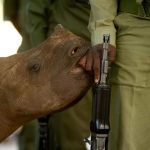

Rhino poaching within Africa has reached yet again an all time new high with a total of some 543 Rhinoceros poached dead for Traditional Chinese Medicine. Even with vast awareness campaigns, increased border patrols, upping Anti Poaching and funding the killing continues. Will it ever end? how long is a piece of string?
From the 30th June 2014 the (DEA) Department Of Environmental Affairs (South Africa) issued their Rhino poaching statistics of which was then 496. Since then a further 50+ have been bludgeoned leaving many people feeling hopeless, let down by their government, and debating on whether it is really a practical choice to support a trade in Rhino horn.
Poaching statistics for 2014 have again beaten records for the years 2010-2011. For both years, poaching statistics for 2010 were 333 poached Rhino and for the year 2011 we saw a total kill rate of 448. Poaching statistics for 2012 look as if they are most likely going to be beaten by this years June-July figures too that saw a total of 668 Rhinoceros poached in cold blood.
On a positive note arrest rates are also allegedly increasing from last year that saw a sky-rocketing 1003 Rhinoceros poached. Increased arrest rates doesn’t necessarily mean we are winning the battle, it merely shows that more and more poachers are encroaching from over the border into South Africa. 2010 saw a total of 165 poachers arrested, 2011 - 232, then in 2012 a total of 267 poachers were arrested, 2013 arrest rates shot up of which a total of 343 Rhino poachers were arrested. For June-July 2014 a total (estimate) arrest rate sees some 141 arrested. So 1148 poachers have been arrested yet we have only seen a handful of these poachers actually charged, brought to justice and convicted.
Its hard to actually believe too that Rhino horn made up of almost the same identical properties as human hair, finger nails, horse hoof, and parrot beak is selling illegally on the black market for a whopping $65,000kg whereas gold sells for a mere $43,000 kg and cocaine illegally trading at some $20,000 kg. Demand is not decreasing and while demand increases so will poaching and as explained there seems to be no end of the onslaught insight.
A powder made from the horns is prescribed in traditional Chinese medicine to cure fever and convulsions, but the substance is now used as a status symbol and a very expensive way for affluent Vietnamese to cure hangovers or, supposedly, to get high—even though the horns are composed of the common material keratin and have about the same psychoactive effects as snorting a fingernail clipping.
By weight, the horns go for anywhere from $60,000 to $100,000 per kilogram—single horns are about 3.5 kg, on average—making the substance significantly more pricey than other ubiquitous status symbols and intoxicants. Indian Rhino horns are still the most sought after and pricer too. International Animal Rescue Foundation Africa spoke with their Indian counterparts of which confirmed Indian Rhino horn is illegally trading for $80,000 kg. The reason for such high price is mainly due to the Indian Rhino’s endangered status. South Africa is home to about 75% of the world’s 29,000 rhinoceroses, but if the country can’t stop the poaching, it may lose that status, said Naomi Doak of the wildlife monitoring network, Traffic. “We are going to reach the tipping point for rhinos,” she told the BBC. “By the end of 2014, we’re starting to be in the negative in terms of deaths and poaching outstripping birth, and the population will start to decline very quickly.”
Trade in Rhino horn is outlawed by the United Nations Convention on International Trade in Endangered Species, but some argue that the best way to undercut black market horn trade is to give it competition in the form of a well-regulated, cheap and legal market for cultivated horns. Rhino horns can be removed harmlessly and regrow—so legalizing the trade could facilitate horn farming that doesn’t harm the animals. Others argue that such an option would encourage misconceptions about the medicinal properties of ingesting the horn and overwhelm the market with demand, allowing poachers to simply coexist with legal trade.
The South African government acknowledges that something has to change. The country’s minister of environmental affairs, Edna Molewa, said that government officials have been meeting to consider “a proposal for the legalization of commercial international trade” to be brought up at the next Convention on International Trade in Endangered Species meeting in 2016. Whilst many are arguing and debating on whether a legalised trade should be opened International Animal Rescue Foundation Africa and Asia are still venomously against such trade of which will kick all conservation efforts backwards. We’re basically giving into the Asian using community should trade be made legal, we’ve fought for so long and provided evidence that clearly shows Rhino horn has no medicinal active properties.
By giving in and should trade not work there us no going back and we will most certainly lose our ionic species the second largest land mammal. According to government statistics, a great majority of Rhino poaching occurs at Kruger National Park, the largest game reserve in Africa, covering 19,000 square kilometres. At the reserve, hunters and those who are impoverished slip through the park’s borders to kill and de-horn Rhinos, earning the equivalent of a typically monthly wage in a single night. Though Kruger has hired soldiers and dogs to stand watch against poachers, they cannot efficiently patrol all of the park’s land. However, when rangers or soldiers do come into contact with poachers, a shoot-out often occurs, with poachers regularly getting killed in a skirmish with security staff. And were not just talking about any reserve here that to some may sound quite easy and straightforward to patrol. Kruger National Park is the size of Israel covering a massive 19,485 kilometres square.
In Nov. 2011, two rangers spotted poachers who were tracking a white Rhino at Ndumo Game Reserve. When the rangers ordered the men to lower their weapons, the poachers, instead, pointed their guns at the rangers and shot. The shoot-out eventually led to the apprehension of one poacher and the death of another, Erasmo Mazivele. Astonishingly, the magistrate, who ruled over the court case in June 2013, convicted the apprehended poacher, Wawito Mawala, with murdering his accomplice, even though it was the rangers who killed Mazivele. The magistrate stated that Mawala had been the cause of Mazivele’s death because Mawala had knowingly put the Mazivele’s life in danger.
The placement of security at game reserves and the persistence of rangers have been positively helping the fight against Rhino poaching. According to the Game Rangers Association of Africa, within the first four months of 2014, 96 low-level Rhino poachers have been arrested. However, not all law enforcement assigned to protect these Rhinos can always be trusted. There have been numerous cases where rangers assigned to guard reserves have been found aiding poachers. This has always been a major concern to International Animal Rescue Foundation Africa of which is strictly monitoring where they place funding too and where equipment is sent, the risks are high, corruption is rife and where a months wages can be made in a day the urge to cross that line and illegally slaughter or aide poachers is tempting to rangers that are barely paid a weeks salary for a months work.
Though the majority of Rhino poaching occurs at Kruger, smaller reserves have also been affected. Poachers have hunted in a variety of game reserves, leaving behind mutilated carcasses of Rhinos, with their horns hacked out of their heads, their eyes gouged out, and their genitalia and ears cut off. To make matters worse, new hunting methods and high-calibre weapons have been developed to make the poaching of these 900 kg animals easier. Helicopters, high-powered rifles, tranquillizer guns, veterinary drugs and night vision goggles have all been used. Since Edna Molewa ordered a “restriction” of Entorphine (M99) back in 2012 there has been quite a large reduction of Rhinos being poached using tranquillizer guns and M99.
Unfortunately the poachers are fighting back. The eyes and and ears of the African skies the Vulture has been targeted viciously by both Rhino and Elephant poachers using cyanide or diclofenac a NSAID anti-inflammatory that is normally used within human and veterinary medicine to reduce skeletal inflammation. Vultures would normally be the first alerting sign to law enforcement on the ground of a dead carcass or seriously injured Rhino that is haemorrhaging profusely.
Have we lost the battle though>? it seems not, nor are we going too. This month has seen more people such as high ranking celebrities and wildlife photographers taking up awareness campaigns or helping to reduce Rhino poaching through whatever means they can. Rhino horn smuggling and selling is transnational and worth millions of dollars, causing the rise in Rhino poaching to only increase throughout the years.
However, in response, in 2012, South African and Vietnamese governments signed a treaty increasing enforcement of hunting bans to deal with Rhino poaching and other conservation issues. The two governments have since been sharing information to clampdown on offenders. Their goal is to disrupt Rhino smuggling transit routes from Africa to Asia.
Celebrities have also played a huge part in Rhino horn awareness, Prince William, David Beckham and Yao Ming teamed up with WildAid to create a series of public service announcements (PSAs), aimed at China and Vietnam, urging people to not support the trading of illegal wildlife. In the first video, the trio focused solely on the ever decreasing population of rhinos due to poaching.
WHEN THE BUYING STOPS THE KILLING CAN TOO!
PLEASE TELL YOUR FAMILY AND FRIENDS NOT TO BUY RHINO HORN, IVORY OR SHARK FIN!
David Beckham and the Duke of Cambridge Prince William team up to protect our mega fauna;
Back in June Prince William and soccer legend David Beckham teamed up to launch a campaign that aims to protect animals from illegal poaching. The Duke of Cambridge, who is also the president of United For Wildlife, promoted the new hashtag #WhoseSideAreYouOn while flanked by Beckham and other star athletes at Google Town Hall in Central London.
“The illegal wildlife trade is responsible for the slaughter of tens of thousands of animals a year, pushing some of our most beloved species to the brink of extinction,” William said. “Our children should not live in a world without elephants, tigers, lions and rhinos. Enough is enough. It is time to choose between critically endangered species and the criminals who kill them for money.”
The #WhoseSideAreYouOn campaign aims to reach people via Twitter, Facebook, Google Plus and You Tube. Supporters will also be urged to participate in or watch United For Wildlife sports events. In anticipation of the launch, William posed alongside his brother Prince Harry for a photo posted to United For Wildlife’s Twitter account. The brothers held a sign that bore the campaign start date of June 9, as well as their royal signatures that can be seen below along with Tennis Champion Andy Murray.
While there are many celebrities now taking up the fight to protect our critically endangered wildlife species there are also the likes of Hilary O’Leary a Zimbabwean wildlife photographer that has been creating awareness of the Rhino poaching epidemic. Miss O’Leary entered a stunning picture of a baby Rhino calf into the Wildlife Photographer of the Year award back in June 2014. Entered into the Natural History Museum (WPY) Award Hilary O’Leary explains in her own words to Dr Josa Depre what inspired her to enter this particular photograph into the award - The interview can be seen below;
Picture Hilary O’Leary
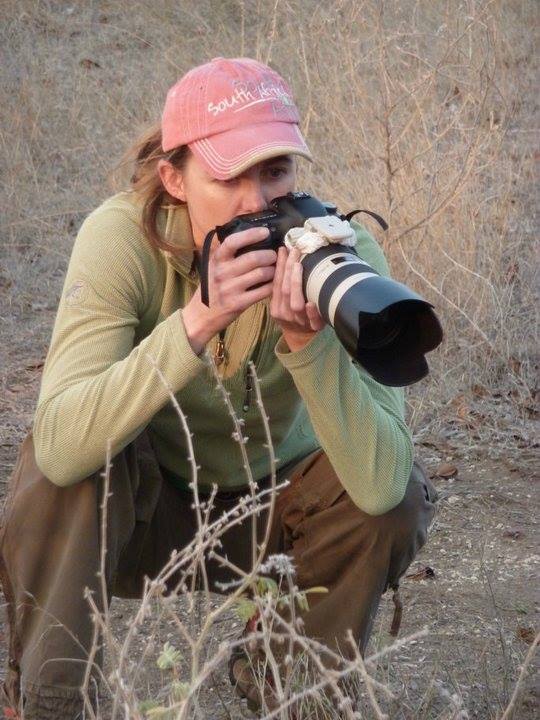
An interview with Hilary O’Leary - Hilary O’Leary has entered one of her stills into the Natural History Museum - Wildlife Photography of the Year Award that has since we published seen an unprecedented amount of support from the public voting in their droves. Please scroll down to view the image, click on the picture and please vote.
Josa - When did you become interested in photography?
Hilary O’Leary - I am fortunate to live in a place which has the most magical things to see and about 3 years ago I realized there was so much more to see when you change the way you view things.. I would say my first interested in photography was about 5 months after I started taking wildlife pictures.. when all of a sudden I felt that wonderful feeling of capturing a great
image. Only then could I see the difference between taking pictures and
photography.
Josa - What’s been your most worked on project and what obstacles did you have to overcome in concluding that particular project?
Hilary O’Leary - My photography is purely a hobby and the only project I could assign to have had has been two or three Photography competitions. So no obstacles yet.
Josa - Whom inspired you to become such a professionally outstanding photographer? I state outstanding as I have viewed some of your past work and you have a great eye for detail.
Hilary O’Leary - I would say I know what I like and have admired and recognized styles throughout all Wildlife Photographers work I have witnessed. I would say the feeling you get when you look at some pictures is what inspires me most.
Josa - I can see you have quite a fondness for African Rhino, do you intend on using your work to fund Rhino projects such as anti-poaching or funding orphanages?
Hilary O’Leary - Yes I love Rhino, only when you have a chance to spend time with them to you realize how innocent and gentle they are. I want to help in anyway I can.
Josa - Rhino poaching has for this year drastically overtaken previous records from 2010, 2011 and 2012 with a near 600 Rhinos slaughtered for fake medicine. How does this make you feel knowing that we could soon see the second largest land mammal banished from the face of the earth and do you have any projects to help sustain Rhino preservation?
Hilary O’Leary - The feeling is - desperate. I can’t help but think the next generation will spend all its resources repairing the damage… But I believe we can make a difference and we will win.
Josa - Can you please explain to our readers what inspired you to take this particular photograph and what sentimental value it has to you?
Hilary O’Leary - The picture was quite incidental as I was driving past and saw a scene.. I only saw what I had captured when I downloaded the images… and the message was so strong. I felt it fitted ” a picture says a thousand words” connotation perfectly.
Josa - Environmental News and Media, Speak up for the Voiceless and International Animal Rescue Foundation Africa have been hosting a youth photography group on-line for the past two years. Do you have any advice, skills or information you’d like to provide to our younger readers that are currently actively involved within youth photography and wildlife preservation?
Hilary O’Leary - I can only say the world is in our hands and there are enough of us to make a difference. I love a quote a read in a different context about training but would like to re-use it here in the war against anti-poaching - its like fighting with a lion… you don’t stop when your tired you stop when the lions tired. We all respond to an image and a single flash of one can stay in our minds
forever… capturing the right images keep the moment real forever and that can change lives!
Josa - What camera and exposure did you use to take this photo pictured above and how long did you have to wait to obtain that pure brilliant shot?
Hilary O’Leary - I use Canon, and it was early morning so light was a little low… 1/200, f2.8
Josa - You have entered this particular piece into the wildlife photography of the year award and since we have published this onto our pages and now ENM site it has generated hundreds of votes and many thousands of shares and likes. Will you be planning on furthering your career outside of your home country Zimbabwe and if so what areas do you plan on working on?
Hilary O’Leary - I have not thought about it… will see what opportunities arrive.
Josa - What’s been your proudest moment in life during this career of photography and why?
Hilary O’Leary - Well it would have to be the current situation, a picture that has created such a wonderful, strong response and a message that has been received correctly.
Josa - On viewing your work past and present I can see that a great deal of patience has gone into perfecting that best shot that has won the hearts and minds of many. Can you describe to our readers just how long it takes you to obtain such outstanding stills, the work that goes into obtaining that perfect still, and how many days and nights have you worked on just one single project?
Hilary O’Leary - I think the time has been spent in recognizing, out of the thousands of images I have taken, which one had the special message. Hours of editing, deleting and searching for a great image..
Josa - What’s been your worst downfall within your career of photography?
Hilary O’Leary - Can’t think right now… I hope its not yet to come either!
Josa - Where do you see oneself in ten years time and do you plan on keeping this amazing work up?
Hilary O’Leary - I hope I will have managed to make, support or assist in the changes we are desperate to see. I hope the success can be measured over years and decades to come. . I hope in 10 years we still have the animals that are so critically endangered.
End of interview.
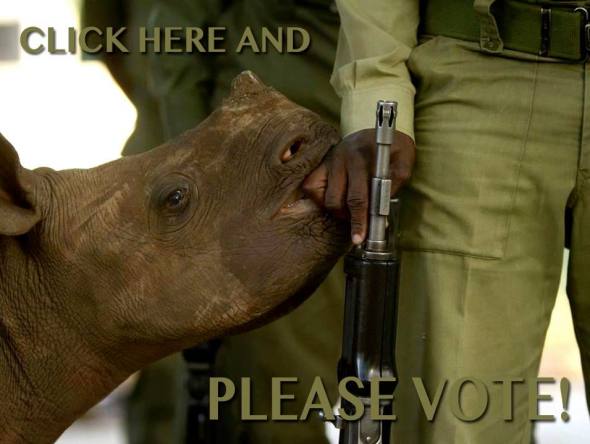
Hilary O’Leary met this little black Rhino whilst spending time at the Malilangwe Conservation Trust in Zimbabwe. The Rhino’s story, however, is not as sad as it might seem. His mother is alive and they are protected by the trust. This image is part of our first ever People’s Choice Award. Since publishing the Hilary O’Leary’s still via our Facebook, Environmental News and Media sites there has been a whopping amount of public support.
People in their thousands have liked and hundreds more have set about voting too. Please don’t forget to vote by clicking on the photo above or by clicking the link here please remember that the closing date for voting is 5th September 2014. Please share this article and ask your friends and family to vote too. The more awareness created of our endangered species the more support can be generated hopefully securing their future furthermore.
Meanwhile in Zimbabwe it has been alleged that Rhino poaching has decreased and Zimbabwe’s Black Rhinoceros population has increased too. The Ministry of Environment, Water and Climate has revealed that there has been a significant drop in Rhino poaching between 2010 and 2013. The African rhino has continued to attract the world’s attention with fears the species might become extinct due to poaching.
In an effort to raise awareness on the need to protect the Rhino species, the country has carried several awareness campaigns. In a speech read on his behalf during the launch of a 500km Rhino Awareness Walk, Minister Saviour Kasukuwere said 52 Rhino were killed in 2010, but the number went down to 38 in 2011 before further decreasing to 22 in 2012.
In 2013, only 16 Rhino were killed.
The black Rhino population has also been steadily increasing from 429 in 2011 to 457 in 2013. The white Rhino species has also increased from 279 in 2011 to 296 in 2013. A professional guide, Sam Nkomo will carry out a 500 kilometre walk from the Matobo National Park to Victoria Falls from the 14th to the 18th of September in a bid to educate communities on the need to preserve the country’s wildlife.
Zimbabwe Tourism Authority chief executive Karikoga Kaseke pledged $1000 towards Nkomo’s walk and urged the corporate sector to contribute towards wildlife conservation awareness programmes. Rhino are classified as endangered on the red list database of the International Union for the Conservation of Nature as their numbers are critically low. Zimbabwe developed a National Rhino Policy and Management Framework for the period 2011 to 2016 in March 2011 in an effort to increase the Black and White Rhino population.
Whilst Rhino poaching has been slowly decreasing in Zimbabwe President Barack Obama United States President has been lobbied by environmentalists to now place sanctions against Mozambique in an effort to curb Rhino and Elephant poaching in other African countries where poaching of both Elephants and Rhino is spiralling out of control. Investigators say substantial evidence exists of Mozambique’s failure to abide by international conventions against wildlife trafficking, including to back up allegations of state complicity.
While President Obama last year mounted a new initiative by the U.S. government to tackle international wildlife trafficking, with a particular focus on ivory, some say Mozambique’s actions are undermining those efforts – and threatening these species worldwide. A new petition, publicly announced that Wednesday, now provides evidence on the issue and urges the president to make use of legal authorities to encourage Mozambique to crack down on poachers.
“Mozambique continues to play an ever-growing and uncontained role in Rhinoceros and Elephant poaching,” Susie Ellis, executive director of the International Rhino Foundation, one of the petitioners, told IPS.
“Although they have been given direction by the international community to enact certain controls, those have been only superficial and have had no meaningful effect. If you look at the large-scale poaching and illegal trade in Rhino horn and Elephant ivory out of Mozambique, it’s directly undercut President Obama’s [efforts] on wildlife trafficking.”
Increasingly working hand in hand with organised crime, poachers over the past three years have killed record numbers of Elephants and Rhinoceroses, particularly in Africa. Some 50,000 Elephants are being killed each year in Africa, alongside 1,000 Rhinos, leaving perhaps as few as 250,000 Elephants in the wild globally.
Driving this illicit market is increased consumer demand in Asia, particularly in China and Vietnam. According to a U.N. report from last year, large seizures of ivory bound for Asia have more than doubled since 2009. The new petition focuses on the central international agreement around wildlife trafficking, known as the Convention on International Trade in Endangered Species (CITES), and warns that Mozambique’s outsized role in African ivory poaching is diluting the convention’s effectiveness. The CITES standing committee is meeting next week in Switzerland.
“Available evidence indicates that Mozambican nationals constitute the highest number of foreign arrests for poaching in South Africa. Organized crime syndicates based in Mozambique are driving large scale illegal trade in Rhino horn and Elephant ivory,” the petition states. (Please sign the petition by clicking the link to your left highlighted)….
“Given the scope and depth of the illegal killing and trade in Rhino and Elephant products by Mozambican nationals, we urge the United States to … enact substantial trade sanctions.”
High-level complicity
Supporters say that strong action by the Mozambican authorities would have a significant and immediate impact on the global supply of illicit ivory.
Officials reportedly estimate that 80 to 90 percent of all poachers in South Africa’s massive Kruger National Park are Mozambican nationals. Local groups say that on most nights more than a dozen separate poaching parties can be prowling the park, most from well-documented “poaching villages” located across the border in Mozambique.
Meanwhile, enforcement of wildlife-related legislation in Mozambique is said to be essentially non-existent, with penalties for poaching and trafficking thus far not effective. Yet changing that situation has been complicated by what appears to be state collusion.
“It’s impossible for that level of illegal activity to be going on without high-level complicity,” Allan Thornton, president of the Environmental Investigation Agency (EIA), a watchdog group based here and in London that co-authored the new petition, told IPS.
“We believe that there are ex-military officials who are providing political protection to the [trafficking] syndicates who are arming and funding these poaching teams. There is substantial evidence implicating both the police and military.”
Mozambique keeps strict control over the types of weapons used by the country’s poachers, Thornton notes, yet such weapons are available to the military. Similarly, police and military uniforms have repeatedly been found in poaching camps.
Thornton says that putting together the new petition took several months, due to the mass of evidence available.
“If all Mozambican citizens were prevented from illicitly crossing over the border, poaching would drop significantly. But there has been no enforcement on the Mozambique side, despite legal obligations under CITES,” he says.
“We believe that the Mozambique government should be held accountable for their activities and act rapidly against these poachers, criminal syndicates and those protecting them. They could close this trade literally in a week.
Unparalleled scope
Thornton says his office is not yet clear on whether the Obama administration has exerted diplomatic pressure on the Mozambique government over the issue of wildlife trafficking. But in filing the new petition, these groups are highlighting the fact that the president does indeed have the legal backing to act on the issue.
Under U.S. legislation known as the Pelly Amendment, the president is allowed to impose trade sanctions if a country is certified to be “diminishing the effectiveness” of an international conservation programme. (U.S. officials could not be reached for comment for this story.)
Further, there is notable precedent under which past determinations – set in motion by EIA petitions – have met with particular success. Two decades ago, for instance, a similar petition was lodged around the trafficking of rhinoceros and tiger parts through Taiwan into China.
That effort resulted in U.S. trade sanctions. Over the following two years, both the Taiwanese and Chinese governments engaged in a broad crackdown on these trades.
“This had a huge impact on reducing demand [for ivory] and reducing the poaching of Rhinos virtually around the world,” Thornton says.
“We saw Rhino populations stabilise worldwide, because two of the biggest markets had closed for demand. This is the same thing we’re now looking for in Mozambique.”
He continues: “And we’re hoping for a particularly prompt response, because the scope of illegal activities we’re currently seeing – where one country is sending hundreds of poachers into another country – is almost unparalleled.”
ALL OUT WAR!
International Animal Rescue Foundation Africa and many hundred more organisations are desperately trying to reduce the Scrooge of Rhino and Elephant poaching that is considered now a war. This war doesn’t just affect Africans or their wildlife. Black market trade of both ivory and Rhino horn is fuelling the trade in firearms and terrorism abroad and within the continent of Africa of which has to be tackled at top governmental level. International Animal Rescue Foundation Africa have been lobbying the United Nations and sent to all (CITES) signatories communications to now support an immediate call for sanctions against Mozambique, Vietnam and China for their failure to reduce both poaching and black market trade. Regardless of what many have stated would actually harm an already impoverished country something has to be done (sanctions must be implemented). While we know poaching and black market trade would decrease sanctions wouldn’t necessarily be spread out over a course of time. So in reality finical harm would be of the lowest. One has to look at it like this. If we lose the Rhino and Elephant, tourism that is a huge money generator would be significantly impacted of which would increase unemployment, crime and anti-social behaviour and leave South Africa that is a modernising country in turmoil financially. We cannot any longer continue to treat the symptoms we have to cure the illness full stop.
Since 2012 the Environmental and Animal Welfare Organisation have sent countless emails and met with a dozen ministers within countries assigned to the (CITES) agreement. Furthermore the Environmental Organisation has been lobbying the United Nations and the British Government to push for sanctions, and to increase military presence from British soldiers not on active service or from the territorial army. Kruger National Park as explained is massive in size and there is simply not enough troops on the ground to fight this war. Training is also needed to now combat the new wave of poachers that are heavily armed and ex-military special forces. South Africa’s ranger units are not equipped or trained in such warfare so training and funding to provide equipment is essential. SNARE the video below was released in 2012 and depicts true real life events, those that comment on Social Media platforms such as Facebook, YouTube, Myspace do not always grasp just how serious this war is. An insight into a rangers life can be seen in last years video release below.
Rangers in the thick of it;
Since the war on poaching began many African ranger and Anti Poaching Units have come under heavy from psychotic rangers. Poachers have also been actively involved in terrorising farmers and individual security services employed to secure our Rhino species. Wildlife rangers endure similar ordeals to soldiers in combat. They routinely face death, injury, or torture from poachers, and the wild animals they protect can kill them too. In the DRC, which has been riven by almost two decades of civil war and political instability, about 150 rangers have been killed in Virunga alone since 2004.
Rangers are exposed to deeply disturbing scenes, with each poached carcass a frustrating and grisly reminder of failure, and they operate in the bush under harsh physical conditions, often with inadequate equipment, pay, and support. International Animal Rescue Foundation this year began phase II of Funding African Wildlife Survival - Operation Equip. This July IARFA have successfully donated $1,111USD to Fund a Ranger - Save a Rhino and donated a further $100USD to the Virunga National Park of which will see a seven man team in combat for a total of one week. F.A.W.S has proven successful since phase II and has already began its phase III Anti Dog Meat Education Operation focusing attention on Liberia the largest African dog meat eating country on the continent.
“Worldwide, about two rangers are killed every week,” says Sean Willmore, president of the International Ranger Federation and founder of the Thin Green Line Foundation, a charity that trains rangers and supports the widows of those killed in the line of duty. “But that’s only partial data,” he adds. “It could be double that amount.” Should Elephant poaching take off in South Africa of which has seen one Elephant poached for its ivory in the Kruger this year we could very well see more rangers shot dead or fatally wounded. Were dealing with heavily armed, well trained and fearless African poachers that will not stop at nothing, especially when a months wages can be earned in a single day.
However its not all doom and gloom. Whilst we all continue to chip in to help those that require more help than IARFA then this war can be won. Rangers are fighting back harder than before. At the start of the year Eleven suspected poachers were killed alone in the flagship national park by SA National Parks (SANParks) rangers and members of the SA Defence Force. Most of the gun battles happened at night after poaching gangs crossed the border from Mozambique. The killing to some may be seen as a godsend however is unfortunately not stopping the bandits from continuing to enter the parks.
Poachers operate in groups of four to six. They are aggressive and engage and shoot at the rangers on sight, creating a daily, life-threatening situation. SANParks said in a statement it was “appealing to the South African public to support efforts by rangers to stop the mass killing on both sides.
Concluding;
International Animal Rescue Foundation Africa has been actively involved in helping to reduce poaching in many ways. Investigating corrupt professional hunters then passing the evidence on, engaging small Rhino ranches pushing funding and equipment to staff on the ground that have literally nothing to defend themselves. Lobbying (CITES) signatories, the United Nations and British Government to now impose and support an immediate temporary sanctions against Mozambique, Vietnam and China. Furthermore we are supporting a no trade in Rhino horn and are venomously pushing and succeeding to now ban Rhino hunting across Africa where Rhino populations are still extant. When the demand stops the poaching will too.
Thank you for reading and please do not forget to vote for Hilary O’Leary Wildlife Photographer.
Dr Josa C. Depre
www.speakupforthevoiceless.org
Chief Environmental Officer
Thermal Conservation - Possible future of our large mammals
Getting an Elephant to swallow a large metal pill is no easy task, they are very intelligent animals and will check the food you prepare for them.
Even hiding a 3 centimetre long capsule in bananas an Elephants favourite food doesn’t work. If they bite on them they will spit them back out. Instead it was discovered to wait until their mouths are open then throw the pills down their throats along with some tasty treats.
The metal pills that are harmless contain not medicine but temperature sensors and radio transmitters. For big animals, staying cool is a challenge and yet Elephants, the largest land mammals in the world, live in some of the worlds hottest countries. So how do they survive the heat? Well this is where environmental research comes into practice from which it was decided to find out just how Elephants’ keep cool.
It was discovered Elephants have evolved some surprisingly sophisticated tricks. Large warm blooded animals not only generate a lot of internal heat, they have a smaller surface area to their volume. To maintain their body temperature when it’s hot, then an Elephant has to lose far more heat per unit of surface area than an average human.
The bigger the Elephant the bigger the problem. What’s more Elephants “don’t sweat” they don’t pant either, probably because it doesn’t work well for such a vast sized mammal from which panting could cause them to hyperventilate to even collapse and die. So panting is just out of the question for these large mammals.
Instead of course Elephants have their huge ears, which act as radiators. They’re pretty effective; A 1992 study calculated that at a temperature of 20oc, a 2000 KG African Elephant could shed all it’s excess heat through it’s ears alone.
But an African Elephant’s can weigh up to 7000kgs and have to survive temperatures that can soar above 40oc. The ears of the Asian Elephant’s meanwhile, are just a third of the size of the African Elephants, so they can only lose a third as much heat through them. Clearly ears are not enough.
We’ve known about some of their other strategies for a while. One is to flap their ears, to increase heat loss. Another is to travel to the nearest pool. Not only does water provide immediate cooling, but the Elephants wrinkled skin traps a lot of moisture and mud, providing a lasting cooling effect as it slowly evaporates.
Thermal Windows;
Thermal images of six African Elephants at Vienna Zoological Gardens where taken, it was then discovered Elephants had another trick. It was first expected to see the ears show up as hot patches as the Elephants shed heat however other hot patches emerged on the animals bodies, including on the legs and on their flanks. Only Elephants ears where thought to have this dense network of blood vessels required to heat up the skin to this extent.
But it now appears many other areas are just as well equipped (Journal of Thermal Biology vol;35 p 182).
What’s more Elephants seem to have an astonishing degree of thermal control. As it got warmer, it was expected to see the whole of each ear to heat up. Instead only small patches warmed at first, the temperature difference between the hot and cold patches was vast - as high as 20oc as the temperature rose higher still the hot areas expanded and eventually merged.
All mammals have skin patches that can act as thermal windows through which heat can escape. But Elephants are the [first] animals known to open, close and merge their windows in this way.
It is thought this ability allows the Elephants to fine tune their body temperature in moderate weather, these thermal windows are only used when the Elephant is comfortable, they are not freezing and don’t feel to hot.
However other researchers have stated that Elephants can even cool specific organs depending on which skin patches heat up. Heat flow through these patches is increased in another, unexpected way; by hair. While Elephants [appear] to be bald, they are in fact covered in sparse hairs. They’re bristly, and wiry, and very thick.
Thick hair keeps mammals warm by trapping a layer of insulating air next to the skin thus reducing heat loss. But Elephant hair is to sparse for that, instead it was wondered if the hairs could act as tiny heat fins.
Investigations then began to delve deeper into this mystery, researchers began investigating this effect by tweaking a computer model normally used to calculate the effectiveness of heat exchangers used for cooling electrical component‘s.
The altered model suggests that Elephants hairs can boost heat loss from the skin by up to 20% (Plos One, Vol 7 Pe47018). Many fascinating things are being found out about these great mammals of which one researcher suggested that hair is not just a relic of their past, but may have evolved to help keep Elephants cool. In fact perhaps hair originally evolved for cooling rather than warming (although this is still a speculation).
However this host of tricks for shedding heat is not enough in extreme conditions. Then, Elephants’ resort to a radical strategy.
This is where the pill like temperature sensors come in. Teams managed to get seventeen Asian Elephants from Zoological Gardens in Germany and Thailand to swallow the capsules. it’s the only way to monitor the Elephants core temperature. You cannot use rectal measures inside the Elephant to obtain the core body temperature.
In Germany where the ambient temperature was around 21oc the Elephants core temperature varied by around half a degree over the course of the day.
But in the Thailand, where the temperature was around 30oc they varied by more than 1 degree from a minimum of 35.5oc at night, the Elephants core temperature rose as high as 38oc during the day (Journal of Comparative Physiology B, vol 182; p 311).
So the Elephants in Thailand are turning size to their advantage. Large bodies are not are not only hard to cool, they also take time to warm up. By letting their body temperature drop abnormally low during the night, the Elephants can endure higher temperatures during the day without getting dangerously hot.
A few other animals do this too - a camels temperature can range from 34oc to over 41oc - but the strategy was thought to be the preserve of desert mammals.
It is thought that African Elephants must adopt this trick to stay cool, but no one has monitored core temperatures in African Elephants exposed to extreme heat. Other large mammals, such as Rhinoceros and Giraffes may well all do the same.
What is clear is that as the planet warms, staying cool is going to become even a bigger challenge for larger animals. With night time temperatures rising even faster than daytime ones in many regions, even the strategy of chilling down at a night to survive hot days might not be enough.
Some parts of Elephants current ranges cold become too hot for them to survive. Its pretty obvious that Elephants are going to change their behaviour. They may change physically too. Perhaps Elephants will be forced to resort to the most radical strategy of all for a large animal - and that is regrettably - shrinking.
Thank you for reading
Director
International Animal Rescue Foundation - Africa
https://www.facebook.com/pages/International-Animal-Rescue-Foundation-World-Action-South-Africa/199685603444685
Travels With Lili - Compassionate animal welfare publication for children 6+
Recently we had the great pleasure of speaking to an inspirational American book publicist, Mr Carl Delvic from the United States that has published an exciting 128 page easy reading fictional children’s book called Travel’s with Lili that is currently on sale at http://www.amazon.com/Travels-Lili-Mr-Carl-Delvic/dp/1481108409 for $9.00 plus postage and packaging.
Carl Delvic based in Dallas, Texas, published the children’s book to highlight the importance of caring for animals within our domesticated and environmental world to the younger generation which is informative, witty and fun, and a great all round read for all budding young book worms from around the world.
We have read extracts from the book and I myself asked my own children what they thought. Their comments were Mum please, pleaseeeeee buy it, I love animals, with my younger daughter of the brood bubbling away at the pictures and smiling like a Cheshire cat.
Travels with Lilly is a must have in all children‘s libraries and upon bookshelves to night time reads too. Fun for both the budding young reader and parents wanting to teach their children both literacy as well as compassionate love for animals, Travels with Lily I and the team here recommend to all parents with children and schools too for furthering animal love, education, literacy and learning, species identification, to education on the importance of animal welfare
The proclaimed author explained to us that he was aiming his book at younger reader’s because he wants to see the next generation mature with a sense of compassion for animals and zero tolerance for abusers, of which we had to find out more about this appealing and very impressive glossy publication.
Travels with Lili is easy reading, filled with showy picture’s of many animals from duckling’s, Lili the authors cat, Chimpanzees, Skunks and many more species of domestic and wild mammals. Eye catching, informative, as well as educational at all reading level’s with easy species identification this is an all time good read for all age groups. Even adults. Small and exciting chapter’s easy to read words, understandable it’s one we most certainly agree is an all rounder.
Split in to easy to read short chapters and pictures we highly recommend this book to the individual reader, to schools and colleges, and parents that want to educate and demonstrate to their children easy reading and the importance of compassionate animal welfare, with a twist of fun and humour.
Travels with Lili doesn’t have long and hard to understand word’s but more the opposite from which also helps children with their reading, punctuation, grammar, whilst understanding ethical care of animals within the modern society that we live within.
Funny and heart touching, Lili the main lovable character takes you on an adventurous ride helping and rescuing her other furry animal friends, within the book Lili as Carl Delvic explains almost gives up the fight, heart touching and emotive she continues though and lives to tell the tale, but that’s all were saying as there is 128 pages of fun, exploration, challenges, and adventure, problem solving but most importantly love and lots of compassionate education. Have no worries too, this book is not extreme, and nor does it have extremist imagery or photographic pictures. Suitable from the ages of 6+
“Lili is a fighter taking no nonsense she save’s the day of many furry friends and fills you the reader with an abundance of joy, happiness and want for more of Lili’s adventure’s”
Here’s Lili

My name is Lili, you can read my adventurous travels, friends and much more within the main book by clicking on me. Hope you enjoy as there are going to be many more stories coming. Available on Kindle at Amazon too.
We interviewed the Author Carl Delvic, regarding his recent children’s publication of which his pet cat Lili is the main inspirational witty feline character that’s intelligent and adventurous. Please take a moment to click on the link above to view Travels with Lili available only at Amazon at a special low price and well worth the read.
Below is an extract from the interview from which we asked Mr Carl Delvic a native from Central Florida, and a graduate of Central Florida Metropolitan University what inspired him to write Travels with Lili and what he aims to gain from his publication. We also asked an of topic question that bugs many children that have been abused as children.
Interviewer;
Carl, what inspired you to write the book Travels with Lili ?
Author - Carl Delvic;
What inspired me to write Travels with Lili was first of all I have a cat named Lili who is very intelligent and adventurous. I was explaining to some friends about some of her exploits and one of them suggested that I write a children’s book about her. Which I did and embellished it for literary purposes. I have always been an animal lover and I have a passion for animal rights and protection of animals from abuse and mistreatment.
Interviewer;
Why did you chose to aim your book at the younger generation for?
Author - Carl Delvic;
I am aiming at younger readers because I want to see the next generation grow up with compassion for animals and zero tolerance for abusers.
Interviewer;
What do you want to achieve by writing and selling your book?
Author - Carl Delvic;
I am hoping to eliminate animal abuse and exploitation within a single generation and create a safe environment for animals and also an appreciation of the capabilities that animals possess. I don’t believe in the misconception of “dumb animals”. I believe that animals possess a type of intelligence that may differ from ours but is in no way inferior.
Interviewer;
Why did you choose Lili the cat to be the main leading figure within the publication and can you describe one of Lili’s most positive moment’s and sad moment’s within the book itself?
Author - Carl Delvic;
I chose Lili because she displays the qualities of intelligence, courage and kindness that are portrayed in the book. Within on of the chapters she rescues a small toad from oncoming traffic and treats him with kindness and compassion. There is also a scene where she is very close to death and it seems like there is no hope. Then there is a resolution and lili becomes stronger than ever.
Interviewer;
The chapter from which Lili is close to death yet fight’s on to tell the tale read’s like a perfect thriller, will you be writing any other books in hard back or soft back to narrated DVD’s based on subjects such as animal and environmental abuse?
Author - Carl Delvic;
I am planning to write sequels to this book involving Lili. I am also planning to devote several book’s to other characters who are in this book too.
Interviewer;
In your own word’s Carl, what’s your own thoughts on the modern conception and mislabelling of children that are abused at a young age, that then “may” later turn out to be an abuser of animal’s, to rapists and paedophiles? I wanted to ask you this question like I do many people as some doctors and criminal prosecutors to just members of the public automatically believe that if a child has been sexually or physically abused they then later abuse an animal which is not fundamentally factual. Proven by many Doctors and adolescent therapists. Kind of a taboo area however one we should all clear up within today’s modern world as it outcasts many children and teenagers as not every child that’s abused turns into an abuser which is common fact.
Author - Carl Delvic;
I have heard that rapists and paedophiles were themselves victims of abuse and many of them start out torturing animals. However I do believe that a fundamental concept of enlightened jurisprudence is the principle of
innocent until proven guilty, which is a tenet of any civilized society.
Interviewer;
Can you detail a small area that’s exciting within the book to a humorous part too, to our younger readers?
Author - Carl Delvic;
There is a humorous scene involving a chimpanzee driving a bus and crashing it into a liquor store, a must read.
Interviewer;
Carl, thank you for taking the time to provide to us and our supporters an insight into Travels with Lili, it reads well and is a fantastic book. Again to all of our supporters and viewers you can purchase Carl Delvic’s book (Travels with Lili) at Amazon by clicking this link http://www.amazon.com/Travels-Lili-Mr-Carl-Delvic/dp/1481108409
Interviewer;
Carl, do you have any plans to promote your book at book fairs, asking major public and private book clubs to schools to look into purchasing Travels with Lili and any near future publications that you explained regarding the other character’s in the book?
Author - Carl Delvic;
I haven’t no plan’s for book fairs at the present but I will not rule out any future ones.
Thank you Carl for the insight into Travels with Lili.
Travels with Lili is child friendly and easy to read with pictures and easy print available in English only on lightweight paperback that weighs only 13.9 ounces, Lili’s adventures is easy it fit into any budding young readers school back pack and on bookshelf’s.
Lili’s adventure’s can be purchased on Kindle http://www.videogamebox.co.uk/Kindle_4_Wi_Fi_Book_Reader_p/100011.htm gclid=CPaiwobxo7cCFc3HtAodkwYAYA
Travels with Lili is now available in Kindle format on request at Amazon. We will also be asking Water Stones and Riverside internationally renowned book distributors to push the book further as this is a rather good and informative fun, and adventurous read as well as being a good all round night time bed time story too.
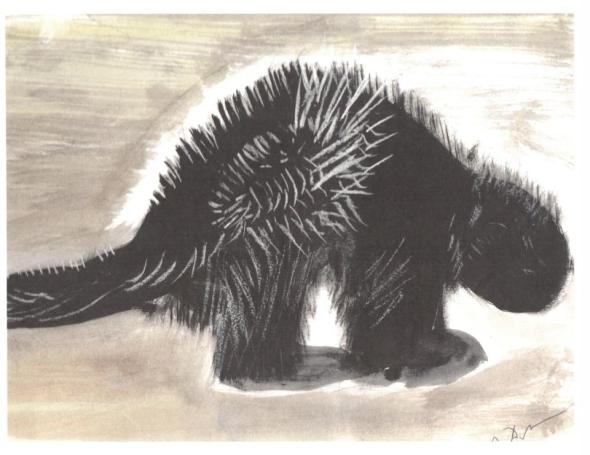
Visit Carl Delvic the Author on Facebook.
Author Carl Delvic quotes;
“Travels with Lili is an exciting tale of a heroic and compassionate cat who travels across country rescuing her fellow creatures from abusive and distressful situations. This book is both informative and entertaining. It raises awareness of some of the suffering animals endure but it also has a touch of humour here and there in the chapters”
Carl Delvic has given us permission to publish his photographs, context and advertise his written book of which all rights and text to pictures are copyright protected under the Digital Millennium Copy Right Act 2008.
No unauthorised copying and/or distribution of pictures sent to ourselves is authorised without the author Mr Carl Delvic and our permission.
Travels with Lili is priced at $9.00 plus postage and packaging, free shipping on orders over $25.00
Paperback: 128 pages
Product Dimensions: 11 x 8.5 x 0.3 inches
Language: English
Currently in stock
You can view through some of the “brief highlights of the book below.
http://www.amazon.com/Travels-Lili-Mr-Carl-Delvic/dp/1481108409
Please note that videos published below are not part of the book but for our own child awareness education of compassionate animal welfare;
Environmentalism - Chapter 38 Europe Faces Superstorms - Climate Change Denial (Exposed)
International Animal Rescue Foundation © has been reporting for some time now on many climatological events and environmental weather disruptions to extremely rare climate phenomena that have been occurring since 2000 when the planets climate behaviour started to fluctuate hitting us with unpredictable weather events that has caused vast environmental and economical damage and will continue too unless we all start to take imminent action in reducing our carbon emissions internationally.
The (WHO) World Health Organisation, most signatories of the Convention on International Trade in Endangered species of Wild Flora and Fauna better known as the Washington Convention to the IUCN and the United Nations Environmental Programme (UNEP) to governments alike are not taking the planets proceeding/forthcoming climate change seriously.
With the summer now over in Africa and most parts of the Quarter and Arabian region we have now been warned that America and Europe will soon be under immense climatological attack from what has been described as a catastrophic cycle of weather patterns that will cause mass loss of life and colossal economic disruption effecting tens of thousands of business’s and hundreds of thousands old and newly constructed domesticated homes.
The homes and businesses that will be mostly affected are those constructed on low graded land to flood plains that holds the rivers excess waters once flood defences or barriers have been breached.
That was the good news though, the bad news is, all recent and past weather and climate change predictions and events measured by climatologists, meteorologists, environmentalists, marine biologists, botanists and environmental agencies have proved Europe now in for an extreme battering.
Up to date environmental reports stipulating the high amounts of carbon emissions, global temperature increases of just over 3.4oc by 2050-2100 international global census reports of human population that is rapidly increasing now to almost 8.9 billion with one child born every minute which “will” reach 9 billion by 2014, and the overuse of atmospheric pollutants, continuous deforestation and illegal logging, and still gargantuan usage of fossil fuels has now concluded that Europe is and will be under immense environmental atmospheric attack causing mass carnage on a colossal and worrying scale never seen.
George W. Bush, ex-president of the United Stated of America should be held officially accountable for this now impending carnage that could have been lessened had American governmental scientists informed the public of the real impending dangers of environmental change however were instead ordered to concoct lies and asking many non-profit organisations to push their compulsive and arrogant damaging non-factual misinformation further from which they have since rebutted their claims and stated they were indeed in the wrong when working in the Bush Administration.
The now irreversible damage has already been done and with all European and International scientists and experts providing the most up to date and accurate data we are now aware that Europe is going to face the harsh identical extremities as the United states is.
International Animal Rescue Foundation © is now 100% certain this is why Operation Black Swan undertaken by over 27 continents and kept strictly confidential until a whistle blower of the United states Government blew the cover when viewing millions of dead land and marine animals washed up and found dead worldwide with human health affected too. Coincidentally he and a further Russian military advisory were found dead months later of which both analysts had apparently committed suicide. No further investigations were uncovered on this and all reports that we did locate on Operation Black Swan have since vanished of the World Wide Web, although there is come data it is little and mostly taken of the original domains.
Come the end of the century super storm Sandy’s could be battering the European nations and beaches. Hurricanes usually form in the western tropical Atlantic and normally head north-west to the United States. Occasionally they will make it to Europe by piggybacking on the jet stream. Simulations of these impending hurricanes were undertaken by the Netherlands Meteorological Institute that conducted further examinations based on current predictions. A detailed climate model for 2094 to 2098 assuming modest future greenhouse gas emissions was conducted that showed startling trends and conclusive results.
Meteorologists and scientist’s found that future hurricanes formed further east within the tropical Atlantic, as that area had warmed sufficiently to provide enough heat and moisture to power them massively. As a result, many didn’t hit the United States of America and instead hit the European Union with devastating consequences mostly hitting and damaging Western Europe.
The storms weakened once they left the tropics but significantly powered up again when they entered cold and windy areas that then culminated into “hybrid storms” like Sandy, halfway between winter storms and hurricanes.
Within the Bay of Biscay the climate model quite accurately predicted the average number of yearly hurricanes will increase in Europe from one to six increasing massive environmental carnage, increased flooding from both river and sea, will have a detrimental yet damaging impact and effect on the European economy, thus leading to loss of life both animal and human and effecting farming communities to displacing species and human population. Diseases and infections will increase, mental illness and suicide caused by such major environmental damages will rise and yet we as humans still aren’t taking enough notice to eve reducing our carbon emission and greenhouses damage.
Abnormal weather patterns that are already amongst us within Europe have ranged from heavy spring snows killing thousands of agricultural animals with a total loss of over 335 human lives. After a brief tease of spring-like weather Europe has been hit with cold temperatures and heavy snow. Keeping in mind that “cold” and “heavy snow” are relative terms — these storms were one of the worst of the season for 2013, not to mention among the worst in years.
Airports across Europe were either closed, or had traffic reduced dramatically. And even the trains were stopped. In Germany, there was traffic accidents on the autobahn involving over 100 vehicles, though fortunately nobody died during that wreck.
In Paris, we had roughly 4 inches of snow — which may not sound like much, but for Paris it’s unusual, and it’s been like this for several years now (snowing when it shouldn’t). Earlier this season we had about twice as much snow as last night, which was also a surprise. As I mentioned before, Paris is not equipped for snow — we just never get that much (or at least we didn’t) — so any snow that sticks will cause major problems mostly affecting transportation thus cutting off the entire country and leaving it at vulnerable security threat.
The melting Arctic ice is also to blame here which is causing the North Atlantic to warm, which is bringing a lot more precipitation to the region. That means the miserable weather of northwest Europe has gone from bad to worse with even more rain and snow because of the warming seas. As the Arctic ice melts, the situation is likely to become worse.
In addition to the warming ocean, the jet stream is unusually far south at the moment, which means that the cold northern air is dipping to the south.
One cannot quote we was never forewarned about these forthcoming events as that is nonsense, the problem is that many governments don’t want you to know about these events because it causes;
- Panic buying
- Over usage of fossil fuels thus draining the grid
- Economical breakdown
- Tax raise
These are one of three reasons why the United States Government paid scientists to quote that climate change was all myth and no evidence because the government wanted you the average $200 a week purchaser of basics fuel’s and groceries kept motivated and moving so they can continue raging political wars, to ensuring the nation is not left at vulnerable level from a potential terror threat or more.
Regrettably though American and international news agencies the very people that are to be trusted to this very day are still compulsively lying to the public of which FOX news was caught with publishing very “dodgy unsound information” on climatological change.
Rupert Murdoch’s companies have been found to be grossly misleading the US public over climate change, with Fox News ‘coverage classed as giving dodgy info 93% of the time. In the report, compiled by the Union of Concerned Scientists, Murdoch’s Wall Street Journal comes a close second in the inaccuracy stakes, with a massive 81% misleading coverage in their opinion pages. The Wall Street Journal Opinion Page’s coverage of climate change was categorically proven to be 81% misleading with only 19% accurate. However Fox’s news channel on climate change was proven to be a massive 93% misleading with and only 7% accurate.
The WSJ, whose commentary include such beauties as “No Need to Panic About Global Warming“, claim that the alarmism created by global warming is something of a conspiracy, offering “an excuse for governments to raise taxes“.
Fox News, who evidently can’t even muster a one in ten success rate of accurate reportage, has certainly got a somewhat dubious record when it comes to accuracy and fairness of their journalism. Readers may recall:
Reporting the death of “Obama Bin laden” http://politicalscrapbook.net/2011/05/fox-news-obama-bin-laden/
Making up new section of the US constitution http://politicalscrapbook.net/2011/12/fox-news-fabricate-constitution/
Describing David Cameron as “President” of the United Kingdom http://politicalscrapbook.net/2011/08/fox-news-president-cameron/
Although this is just mumbo jumbo it still proves that not only the government but also the media provide little accuracy when reporting real life affairs that the international community need to be informed off. Lying and asking others to lie is tantamount to global extinction caused my human negligence.
We truly believe that the spin doctors and non-profit organisations as listed in Greenpeace’s leaked document that the government conveniently paid over 100 (NPO’s) to lie to hundreds of thousands of supporters is still to this date on-going.
Non-profit organisations are the government’s most desired weapon within the area as organisations contain followers both online and offline with some one billion just on Facebook that view many “governmental non-profits”. So by quietly paying them off to place every now and then reports that climate change is all myth” then the United States Government of the Bush and Obama administration must be held fully accountable for loss of life, economic damage and mass environmental carnage that could have been reduced in the past and now present.
This private musing between two climate scientist colleagues first surfaced along with a whole raft of embarrassing material in 2011, when the anonymous Climate gate leaker who calls himself “Mr FOIA” leaked his second set of emails from Britain’s disgraced Climate Research Unit (CRU) at the University of East Anglia, Norfolk. Now, Mr FOIA has emerged for a third time, sharing with the world not only his entire batch of 220,000 encrypted emails and documents but also, for the first time, his thoughts. We are fully aware of Mr FOIA whom is a godsend to science and critics alike.
Mr FOIA had previously released two batches of 5,000 files each in 2009 and 2011. This enormous third batch went to a network of friends for decoding, sorting and publication within East Anglia and Cambridge, of the United Kingdom.
The first and second email batches contained conversations among “scientists” who appear to have dishonoured a once respectable discipline, documenting that their claims of a “man-made global warming crisis” look exactly like deliberate contrivances for academic career gain, research funding and positions of political power in “the cause.” Some big-name players are playing games with people’s lives and livelihoods.
The biggest player The United Nations Intergovernmental Panel on Climate Change (IPCC) is the scientific panel whose reports contain the work of Climate gate figures – and are highly politicized and publicized to increase fear of Anthropogenic Global Warming (AGW): “imminent catastrophic man-made climate change.” Many horrendously expensive and needless local, state, federal and international policies have flowed from IPCC’s flawed reports.
The most powerful symbol Professor Michael Mann’s “Hockey Stick Graph” was featured prominently in the 2001 IPCC Third Assessment Report. It alleged that global temperatures were flat for a thousand years before 1900, but then radically increased because of AGW. The chart looks like a hockey stick, a long straight line that bends sharply upward at the end. With recent IPCC admissions that temperatures have not increased for at least the past 16 years, the curve has now plunged downward to become as flat as the rest of the hockey stick, which is where public trust in climate science is headed.
The Game: “The game is communicating climate change; the rules will help us win it,” says an astounding, horrifying UK government-funded booklet leaked by Mr FOIA titled “The Rules of the Game: Evidence base for the Climate Change Communications Strategy.” Written by the UK public relations firm Futerra for six UK agencies – including The Carbon Trust – for use by ethics and public relations tone-deaf scientists,
“The Rules” teaches sophisticated behaviour change tactics, including: “Climate change must be ‘front of mind’ before persuasion works” … “Link climate change mitigation to positive desires/aspirations” … “Beware the impacts of cognitive dissonance” and “Use emotions and visuals” (e.g., scare people with the Hockey Stick Graph). It treats the public like gullible idiots who can be frightened and manipulated by seemingly trustworthy scientists to believe in AGW. For a long time, it worked.
The Team: Phil Jones, head of the CRU; Peter Thorne of the UK Met Office (the national weather service, originally the Meteorological Office) was joined by Kevin Trenberth, climate analysis section head of the U.S. National Centre for Atmospheric Research (NCAR); Tom Wigley, also of NCAR; and the litigious Penn State University Hockey Stick originator, Michael Mann.
James M. Taylor, senior fellow for environment policy at The Heartland Institute, sums their actions up this way. The team consciously distorted and actively suppressed critical knowledge, then furiously tried to hide their actions by conducting a vicious smear campaign to discredit critics.
Consciously distorted: NCAR’s Wigley once complained to Mann, “Mike, the Figure you sent is very deceptive … there have been a number of dishonest presentations of model results by individual authors and by IPCC..”
Peter Thorne of the UK Met Office warned Phil Jones, head of the CRU: “Observations do not show rising temperatures throughout the tropical troposphere, unless you accept one single study and approach and discount a wealth of others. This is just downright dangerous. We need to communicate the uncertainty and be honest. Phil, hopefully we can find time to discuss these further if necessary.… I also think the science is being manipulated to put a political spin on it, which for all our sakes might not be too clever in the long run.”
Suppressed critical knowledge: Phil Jones wrote, “I’ve been told that IPCC is above national FOI Acts. One way to cover yourself and all those working on the IPCC 5th Assessment Report would be to delete all e-mails at the end of the process. Any work we have done in the past is done on the back of the research grants we get – and has to be well hidden. I’ve discussed this with the main funder [the U.S. Department of Energy] in the past and they are happy about not releasing the original station data.” The U.S. government was colluding with the hiders, who received tens of millions of dollars over the years.
Jones wrote to Mann, “Mike, can you delete any emails you may have had with Keith Briffa re AR4 [the IPCC 4th Assessment Report]? Keith will do likewise. … We will be getting Caspar Ammann to do likewise.”
Tom Crowley, a key member of Mann’s global warming hockey team, showed crass disregard for the lying and hiding: “I am not convinced that the ‘truth’ is always worth reaching, if it is at the cost of damaged personal relationships.” It’s more important to keep the career back-scratching team happy.
The distortion, spin, suppression and smear campaign went on for years. In fact, the revelations sparked a furious “hide the lies” denial campaign that ironically calls sceptics “deniers.” What the sceptics actually deny is that there has been much honest science involved in the IPCC process; that there is any evidence to support claims that we face an imminent climate crisis; and that humans are primarily responsible for weather and climate variations that have always been controlled by hundreds of complex, inter-related natural forces and processes.
“Hide the lies” generated lawsuits between climate science “believers” (what kind of real science requires belief?) and sceptics of “dangerous man-made planetary warming” – along with ridiculous conspiracy theories such as “Big Oil hired evil hackers in a plot to discredit angelic climate scientists.”
Mr FOIA denies these absurd allegations in his 3.0 message. “I took what I deemed the most defensible course of action, and would do it again,” he said. “That’s right; no conspiracy, no paid hackers, no Big Oil. The Republicans didn’t plot this. USA politics is alien to me, neither am I from the UK. There is life outside the Anglo-American sphere.”
“The first glimpses I got behind the scenes did little to garner my trust in the state of climate science – on the contrary,” Mr FOIA continued. “I found myself in front of a choice that just might have a global impact.” Reveal what he had discovered, or keep it to himself and let the lies continue?
Didn’t he fear discovery? “When I had to balance the interests of my own safety, the privacy and career of a few scientists, and the well-being of billions of people living in the coming several decades … millions and billions already struggling with malnutrition, sickness, violence, illiteracy, etc. … the first two weren’t the decisive concern.”
Why did he do it? His answer was both angry and anguished: “Climate science has already directed where humanity puts its capability, innovation, mental and material ‘might’ …. The price of ‘climate protection’ with its cumulative and collateral effects is bound to destroy and debilitate in great numbers, for decades and generations,” he wrote. “We can’t pour trillions in this massive hole-digging-and-filling-up endeavour and pretend it’s not [taking] away from something and someone else.”
That’s the most important statement so far in the decades-old climate debate: You’re forcing us backward into poverty and ignorance – for nothing, except to further your careers, funding and power. Less than a week later, London’s Mail on Sunday’s newspaper ran an outraged feature based on the British Meteorological Office’s recent admission that global surface temperatures haven’t risen in more than 15 years. Citing a chart of predicted and actual temperatures, the Mail noted: “Official predictions of global climate warming have been catastrophically flawed. The graph they produced blows apart the ‘scientific basis’ for Britain reshaping its entire economy and spending billions in taxes and subsidies in order to cut emissions of greenhouse gases. The chart shows in incontrovertible detail how the speed of global warming has been massively overestimated. Yet those forecasts have had a ruinous impact on the bills we pay, from heating to car fuel to huge sums paid by councils to reduce carbon emissions. The eco-debate was, in effect, hijacked by false data.”
Is it improper to label the people responsible for this costly, miserable catastrophe as “eco-thugs”? And should we worry that the latest no-real-energy “energy security” proposal from the White House is telling us that President Obama has become America’s “Eco-thug in Chief,” who will continue to peddle fraudulent science and nearly worthless renewable energy to further his agenda? It’s worth pondering.
A set of pro forma “investigations” claim to have exonerated PSU’s Mann. The internal PSU inquiry – with no impartial truth-seekers involved – was not going to harm their grant-getting cash cow Mann; instead, it whitewashed the evidence to ensure the preferred conclusion. Professional science groups that relied upon public funding for their financial survival fell in line behind a huge Tom Sawyer campaign of “exoneration.” There was no exoneration.
Summaries presented in court filings for the case of American Tradition Institute v. University of Virginia and Michael Mann – which demands release of Michael Mann’s emails – say, “Mann has never been exonerated…. Exoneration requires investigation; investigation requires pursuit aimed at discovering material facts. Mann’s employer since 2005, Penn State University, has conducted no such thing. Neither has the University of Virginia.”
The same conclusion applies to the UK’s Muir Russell and Oxburgh inquiries, which didn’t even mention Mann, because they were “investigating” only employees of the CRU.
I asked Christopher C. Horner, senior fellow at the Competitive Enterprise Institute and attorney in the ATI v. UVa/Mann lawsuit for his take on the leaker’s message. He told me, “Whatever prompted ‘Mr FOIA,’ I take it as a statement that, so far, the courts have failed us, as have our political institutions – and he has concluded that those in the public who have resisted the climate industry agenda should now have a chance to review these taxpayer-financed records, which are the subject of a remarkable campaign to subvert transparency laws.”
We ourselves can’t avoid blame for the science disaster uncovered by Mr. FOIA. As Peter Foster of London’s Financial Times noted, we didn’t heed President Dwight Eisenhower’s warning. “Most people are aware of Ike’s warning in 1961 about the military-industrial complex,” Foster wrote. Our fatal error was to ignore what he said next: “In holding scientific research and discovery in respect, as we should, we must also be alert to the equal and opposite danger that public policy could itself become the captive of scientific-technological elite.” [Emphasis added]
Americans won’t take captivity. It’s time to demote our climate masters to our humble servants. We won’t kill them. But we should sentence them to prison – or Siberia, where they’ll wish the climate was warming.
Should we continue to not open our eyes and view what is on-going around us for ourselves such as peculiar weather patterns, plants blooming at the wrong time of seasons, reliable metrological reports, heat waves, and flooding then we will all be a major victim to the lies that have been consequently spread and still are being spread to this day.
April 15th 2013 –
Millions of people will die of starvation across the world as agricultural yields are expected to tank and the price of food is expected to double by 2050 scientists warned in a new report released this week. The culprit? Extreme temperatures, floods and droughts brought on by climate change and scientific negligence, modern scientists though warned in this year’s US National Climate Assessment that you can view here - http://www.globalchange.gov/home and for Europe http://www.eea.europa.eu/themes/climate
Lead researches of the study told The Observer that food insecurity risks turning parts of Africa into permanent disaster areas. Frank Rijsberman, head of the world’s 15 international CGIAR crop research centres, stated:
Food production will have to rise 60% by 2050 just to keep pace with expected global population increase and changing demand. Climate change comes on top of that. The annual production gains we have come to expect … will be taken away by climate change. We are not so worried about the total amount of food produced so much as the vulnerability of the one billion people who are without food already and who will be hit hardest by climate change. They have no capacity to adapt.
According to the Intergovernmental Panel on Climate Change (IPCC), to keep global warming below 2 °C, emissions of carbon dioxide (CO2) and other greenhouse gases (GHGs) must be halved by 2050 (compared with 1990 levels). Developed countries will need to reduce more – between 80 % and 95 % by 2050; advanced developing countries with large emissions (e.g. China, India and Brazil) will have to limit their emission growth.
Agreed in 1997, the UNFCCC’s Kyoto Protocol is a first step towards achieving more substantial global emission reductions. It sets binding emission targets for developed countries that have ratified it, such as the EU Member States, and limits the emission increases of the remaining countries for the first commitment period from 2008 to 2012. The 15 pre-2004 EU Member States (the EU-15) have a joint emission reduction target of 8 % below 1990 levels. Through the internal EU “burden-sharing agreement”, some EU Member States are permitted increases in emissions, while others must decrease them. Most Member States that joined the EU after 1 May 2004 have targets of -6 % to -8 % from their base years (mostly 1990).
EU emissions represent about 10 % of total global emissions. The United States, which has a large share of total global GHG emissions, has not ratified the protocol. China and several other countries with large GHG emissions do not have binding emission targets under the protocol. Countries are expected to meet their target mainly through domestic policies and measures. They may meet part of their emission reduction targets by investing in emission-reducing projects in developing countries (the Clean Development Mechanism (CDM)) or in developed ones (Joint Implementation (JI)). The CDM is also meant to support sustainable development, e.g. by financing renewable energy projects.
The Cancún Agreements, adopted at the UN Climate Conference in Mexico (December 2010), include a comprehensive finance, technology and capacity-building support package to help developing nations adapt to climate change and adopt sustainable paths to low-emission economies. The agreements also include a time schedule for reviewing the objective of keeping the average global temperature rise below 2 °C. The agreements confirm that developed countries will mobilise USD 100 billion in climate funding for developing countries annually by 2020, and establish a Green Climate Fund through which much of the funding will be channelled.
The ‘Durban Platform for Enhanced Action’, adopted at the UN conference in South Africa (Dec 2011) agreed a roadmap towards a new legal framework by 2015, applicable to all Parties to the UN climate convention. It also foresees a second commitment period of the Kyoto Protocol, starting in 2013. Agreement was also reached on the design and governance arrangements for the new Green Climate Fund.
Many European countries have adopted national programmes aimed at reducing emissions. Similar EU-level policies and measures include:
1) Increased use of renewable energy (wind, solar, biomass) and combined heat and power installations;
2) Improved energy efficiency in buildings, industry, household appliances;
3) Reduction of CO2 emissions from new passenger cars;
4) Abatement measures in the manufacturing industry;
5) Measures to reduce emissions from landfills.
This is sounds all good and positive news however is it going to work? The Abatement measures should have been implemented a long time ago when the European Union and America knew of these problems.
These measures give authorities the power if companies pollute or break environmental laws to close an entire company down to protect our vulnerable environment to flora and fauna. This type of order is more or less an anti-social behaviour order. Should the abatement team ascertain enough data and believe that a crime is being committed or rules are being flouted then action will be taken immediately to preserve our natural environment.
Current unpredictable weather patterns that have been hitting the Europe from 2013;
January
Insurance companies were faced with a flood of claims yesterday following Tuesday’s freak hail storm that hit the north and east of Malta. Certain crops can be replanted but some will have lost everything Middlesea Insurance said they received a flurry of claims for damage at property located in Baħar iċ-Ċagħaq, St Andrew’s, Għargħur, Mosta, Naxxar and San Pawl Tat-Tarġa. These came in the wake of reports of tennis ball-sized hailstones lashing certain localities around midday on Tuesday.
Claims under property insurance policies were submitted for damage to solar water heaters, photovoltaic panels, glass and water pipes, said Middlesea’s chief claims officer, Patrick Muscat. A number of private motor vehicle claims were also filed under comprehensive policies. Asked if hail was considered an ‘act of God’ by insurance companies, Mr Muscat said the term was an old misnomer that should be avoided. “It is now standard practice to have storm cover under most, if not all, property insurance policies,” he explained. Mile-End car repairs and towing services said it was busier than usual when the storm hit. “We were called to accidents in Rabat, Mosta and Naxxar. The water on the road was a big problem,” a spokesman said. However, they did not have an unusually high number of repairs yesterday – “just a few for spark plugs caused by water damage”.
The hail mostly caused slight cosmetic damage to vehicles, the spokesman added.Farmers also suffered with some having their crops destroyed by the hail, according to Joe Galea, president of the Rural Manikata Cooperative.
Although the farms around Manikata were unaffected, Mr Galea said farmers in the Mosta, Rabat and Ta’ Qali areas were not so fortunate, with potatoes and onions badly hit. “The storm did not hit everywhere but some farmers were very unlucky. Certain crops can be replanted but some will have lost everything,” he said.
“It’s too early to say if they will ask for compensation from the Government,” Mr Galea said. There were widespread reports of the hailstones denting solar panels even though a spokesman for Solar Solutions in Naxxar said they had received no calls about damage to products they had sold as of 11am yesterday. “Our solar heaters have thick security glass and are designed to withstand some punishment. Good quality solar panels would not normally be damaged by hailstones,” he said.
In Għargħur, which bore the brunt of the storm, locals enjoying morning refreshments in San Bartilmew band club said many cars belonging to residents were dented and windows were broken.
One woman said her adult son was distraught after his 35 racing pigeons, costing some €2,000, were caught in the hailstorm.
“Lots of them did not come home and the ones that did were badly injured. One lost an eye,” she said. The parish priest also suffered extensive damage to his home, according to locals, but he was not available to comment when The Times visited his house.
February
A woman died and numerous commuters were left stranded in Athens after the Greek capital was hit by its worst storm in 50 years on Friday.
At least 900 calls were made to the fire department requesting for aid to pump water out of homes, with many basements being inundated. Another 90 rang asking for assistance after being ensnared in their cars. Many cars were seen to be swept and overturned by the deluge.
A 27-year-old woman died from a suspected heart attack after being extracted from her marooned vehicle by other motorists, in the northern suburb of Halandri.
The Greek city suffered power outages overnight, after a river bank bursting. Early commuters were brought to a standstill as a result of the flooding. A house collapsed in the city centre, but no injuries were reported.
The flooding culminated in havoc for public transport as the tram system was stalled for an hour while rail schedules were temporarily postponed after a tree fell on the tracks.
March
Many parts of Europe are struggling to return to normal after a freak snowstorm caused travel chaos. On Tuesday the Eurostar trains had to be suspended as severe weather in Northern France and Belgium forced operators to close sections of the railway. Other high speed train services were also halted.
Even Jersey, normally one of the warmest parts of the British Isles, was not spared from the severe conditions. Residents had to cope with 100 kph winds as snow covered the island. Meanwhile more snow fell on central Germany. North of Frankfurt the Autobahn had to be closed after a 100-car pileup injured dozens of people. Nearby, Europe’s third largest airport also had to close forcing more than 355 flights to be cancelled.
Italy - A strong tornado hit Italy’s Venice and its lagoon causing big damage to local environment. Hundreds of trees were destroyed by the storm which hit the renowned northern city and some small islands of its lagoon including Sant’Elena, Sant’Erasmo and Certosa.
April
Britain’s impending cold snap could cause hundreds of millions of pounds of damage as a result of frozen or burst pipes, householders were warned. British Gas is predicting that the plummeting temperatures expected next week could trigger more than 20,000 emergency calls a day.
Forecasters have warned that a cold blast from the Arctic is on its way, beginning with snow showers in Scotland on Sunday and gradually spreading south. It is estimated that one in five homes could be at risk from damage caused by frozen and burst water pipes, British Gas said.
Figures from the Association of British Insurers show that burst pipes across the UK cost insurance companies more than £415 million in 2002 - three times as much as the total cost of river flood damage to UK homes that year. And in 2003, British Gas reported more than 15,000 call-outs on the coldest day on January 8, when average temperatures fell to just below minus 3C (27F).
As a precaution, the company has cancelled all routine visits in the early part of next week. Dave Kendle, director of British Gas home service operations, said: “The message is simple - never underestimate the misery caused by burst pipes and no heating.
“Colder weather puts added pressure on your heating systems as they work harder to keep homes warm. Not only this, but the damage caused by torrents of water from burst pipes could run into thousands of pounds.” The company advises householders to check that their main stopcock works and that all pipe work, cisterns and tanks are well insulated.
April 2013 – Colossal Climate Destruction is no longer confined to the United States of America;
Current Hurricane Historical Data;
Europe’s hurricane history
Only once since accurate records began in 1851 has an actual hurricane with full tropical characteristics hit Europe. This happened on September 16, 1961, when Category 1 Hurricane Debbie hit north western Ireland. Wind gusts reached 106 mph at Bally Kelly and 104 mph at Tiree and Snaefill, and coastal radio stations reported the airwaves were jammed with calls for help from small ships and fishing craft. Eleven people were killed and 50 injured in the storm. The only other tropical cyclone recorded to have hit Europe since 1851 was Hurricane Vince of 2005, which hit southern Spain as a tropical depression on October 11, 2005. Historical documents also suggest a hurricane hit Spain on October 29, 1842.
Britain’s history of ex-hurricane strikes
Hurricanes that transition to powerful extra tropical storms hit the British Isles several times per decade, on average. In 2011, Hurricane Katia brushed by Newfoundland, made the transition from a tropical system to a powerful extra tropical storm, and maintained strong winds of 50 - 65 mph as it crossed the Atlantic.
Ex-Katia hit northern Scotland on September 12, 2011. Glen Ogle, Scotland, at an elevation of 1500 feet (546 meters), received sustained winds of 60 mph, gusting to 86 mph. Cairngorm, in the Scottish Highlands at an elevation of 4085 feet, reported sustained winds of 67 mph. With the trees in full leaf, tree damage was much higher than a winter or springtime storm of similar ferocity would have caused.
One person was killed by a falling tree, and heavy tree damage and numerous power failures were reported throughout Britain. Other gusts experienced in Britain included 76 mph at Edinburgh Blackford Hill, 75 mph at Capel Curig in Wales, 72 mph at Glasgow Bishopton, and 71 mph at Loftus, North Yorkshire.
As reported by UK Met Office forecaster John Hammond in a post on the BBC 23 degrees blog, Britain has been affected at least eight times in the past twenty years by extra tropical storms that were once tropical storms or hurricanes. Before Katia of 2011, the most recent such storm was Hurricane Bill of 2009, which hit Ireland as an extra tropical storm on August 25 with sustained winds of 45 mph. Bill was a Category 4 hurricane northeast of the Lesser Antilles five days prior. In 2006, a record three extra tropical storms that had once been tropical cyclones hit Britain.
Extra tropical Storm Alberto, which had been a strong tropical storm that hit the Florida Panhandle, hit northern Ireland and Scotland as an extra tropical storm with 35 mph winds.
Extra tropical Storm Gordon hit Ireland on September 21, 2006, with sustained winds of 65 mph. Gordon brought record warm temperatures as tropical air pushed north across the UK, and also strong winds that brought down power lines in Northern Ireland. Wind gusts to 60 mph (97 km/h) occurred in the Isles of Scilly off the southwest coast, and 81 mph (130 km/h) on the mainland.
Other post-tropical cyclones that have the U.K. in the past twenty years include Hurricanes Isaac and Leslie of 2000, Hurricane Karl of 1998, and Hurricane Lili of 1996. The most severe of these storms was Extra tropical Storm Lili, which hit Ireland on October 28, 1996, with sustained winds of 65 mph. Lili caused $420 million in damage, in the U.K; Lili produced a 92 mph (148 km/h) gust at Swansea, South Wales, while bringing a 4′ (1.2 meter) storm surge that inundated the River Thames.
In Somerset, 500 holiday cottages were severely damaged. A U.S. oil drilling platform, under tow in the North Sea, broke loose during the storm and nearly ran aground at Peterhead. On the Isle of Wight, a sailing boat was beached at Chale Bay; luckily all five occupants were rescued. It was the most damaging storm to have struck the United Kingdom since the Great Storm of 1987, which killed 22 and caused $660 million in damage. However, Lili also broke a four-month drought over southwest England. All but one of these storms hit during the peak part of hurricane season, mid-August - late October. The only exception was Ex-Tropical Storm Alberto of 2006, which hit Britain in June.
Hurricanes in the Mediterranean Sea
The Mediterranean Sea between Europe and Africa has experienced several damaging hybrid subtropical storms in recent decades, but has never experienced a fully tropical hurricane in recorded history. However, global warming may cause the Mediterranean to start spawning hurricanes by 2100, according to a 2007 study by a research team led by Miguel Angel Gaertner of the University of Castilla-La Mancha in Toledo, Spain.
They ran nine different climate models with resolutions of about 50 km and found that some (but not all) of the models simulated hurricanes in the Mediterranean in September by the end of the century, when ocean temperature could increase by 3°C, reaching 30°C.
Though the Mediterranean may start seeing hurricanes by the end of the century, these storms have been quoted to be rare and relatively short-lived for three reasons as one independent American scientists claimed below;
- The Mediterranean is quite far north and is subject to strong wind shear from jet stream activity.
- The waters are shallow, and have relatively low heat content. There is no deep warm water current like the Gulf Stream.
- The Mediterranean has a lot of large islands and peninsulas poking into it, increasing the chances that a tropical storm would weaken when it encountered land.
Can one rely on these three climatological unproven theories though?
- December 14th 2010 - A luxury cruise ship has been left in disarray - and dozens of its passengers hurt - after it encountered unexpectedly heavy seas in the southern Mediterranean. The Brilliance of the Seas is now limping to Malta after being assailed by giant waves - which caused it to rock dangerously from side to side - while sailing to the Egyptian port of Alexandria.
- February 2012 – NASA Space Agency quoted a nasty looking storm was spotted by a satellite today (Feb. 23) as it spun over the Mediterranean Sea. The cyclonic, counter-clockwise spin of a low pressure system was viewed from the NOAA-19 AVHRR satellite sensor taken on Feb. 23, 2012. This system has brought up to 4 inches (10.2 centimetres) of rain over the last 24 hours to coastal areas in Europe and Africa. NOAA-19 is the last of the POES line of polar-orbiting satellites run by NOAA. Its successor, the Suomi-NPP satellite, was launched late last year and is currently undergoing its check-out phase as the sensors are gradually turned on.
- January 8th 2013 - Stormy weather, including snow, high winds and heavy rainfall, lashed the eastern Mediterranean coast, downing power lines and trees and causing several injuries in a number of countries. Heavy snowfall blanketed Turkey’s commercial hub Istanbul, a city of 15 million, paralysing daily life, disrupting air traffic and land transport. Officials said the snow is expected to continue until late tomorrow, according to the weather forecast. Syrian refugees in a Jordanian camp attacked aid workers with sticks and stones on Tuesday, frustrated after cold, howling winds swept away their tents and torrential rains flooded muddy streets overnight. Police said seven aid workers were injured.
- March 2010 - Earlier in the week transport in Barcelona ground to a halt as snow covered the Catalan capital and the snow storms have continued, passing over the Balearic Islands and the Costas, both popular with holiday makers hoping for some spring sunshine. Roads were closed as up to four inches of snow fell across Majorca and many residents and holidaymakers stayed indoors.
There are still to this very day much confusion and irresponsible lies that are being regurgitated to the public so that panic is not started, not creating panic is within our eyes a professional manner to adopt. However to completely lie, and to pay scientists and non-profit organisations that we are supposed to trust “not naming any names” but if I quote [certain climate and environmental groups] is dangerous and dicing with people’s lives as well as affecting our next generations future and economy.
Scientific data has long been out within the open that proved this climate prediction would eventually occur however the government wish to censor this and/or take legal action against these proof writers to keep their counties economy stable, to push people into purchasing more products, and, and to rage transnational wars as without the tax payers money then wars cannot be fought. The governments then cannot obtain oil and petroleum via occupying foreign continents that they believe to be of a high security risk to them.
The lies are still continuing and being raged even as I document more on sporadic climatological change.
Evidence is out there that proved and “proves” climate change is more than real. We only have to look at the mass shifting ice sheets within Antarctica to viewing the Polar Bear now facing extinction to now understand that climate change is now a “domestic and international terror threat to life” that the American government could have taken seriously and acted upon rapidly reducing loss of life, economic instability, agricultural damage, and species extinction.
That time regrettably has since passed and now we are the ones that are too now pick the pieces up caused by deliberate governmental negligence. Had the PUBLIC been informed correctly and NOT lied to then we could of all back within the early 1980’s when air and marine temperatures noticeably began warming could of taken action to reduce the now forthcoming climate carnage.
Climate carnage is going to hit Europe hard thus then moving us all into economic meltdown the current cost of climate change destruction has risen in the United states from $100 billion (1989) to now (2013) $390 billion and climbing fast. 730 million European citizens and “non-European” the most vulnerable are now in danger, can they afford these types of “hurricane Sandy” hurricanes?
I finish with more lies that the United States Government are still spouting;
Representative Chris Stewart (R-UT) is the chair of the subcommittee on the environment, the congressional group in charge of the EPA, climate change research, and “all activities related to climate.” It is therefore extremely troubling that Stewart denies the basic findings of climate science. (What’s new though the EPA support’s sustainable hunting) Stewart has said that he is “not convinced” that climate change is a threat, despite the fact that the EPA, NOAA, and all of the climate science and scientists that he now oversees, disagree with him. In fact 98% of actual climate scientists disagree with his views on climate science.
At a recent town hall meeting, a group of activists confronted Stewart on his ill-informed views on climate science. The activists, working with the group Forecast the Facts, presented Stewart with a 17,000 signature petition demanding “the Chairman of the Science Committee’s Subcommittee on Environment stop using his seat to promote climate denialism.” They also held up banners reading “Believe It Or Not Climate Change Is Not Going Away,” “97% of Say Climate Change is Human Caused. We Trust Them,” and “Stewart Denies While Utah Burns.”
The group of activists included high school student Sara Ma. “Many people think climate change is a future problem for my generation to solve later, but it’s not. The data shows that it is here, it’s happening and it has a cost,” said Ma, a 17-year-old senior at West High School. Utahns are particularly upset by Stewart’s ignorance on climate issues due to the record wildfire season they endured last year. Wildfires did over $50 million dollars in damage to Utah in 2012.
Stewart’s climate denial is made more suspicious by his close ties to carbon polluting industries. His brother and campaign manager, Tim Stewart, is a Washington, DC lobbyist for fossil fuel corporations. In addition, he has received more campaign donations from oil and gas companies than any other single source.
Cyclones causing wind storms in the Mediterranean: characteristics, trends and links to large-scale patterns
Climatology studies of cyclones with a focus on their relation to wind storm tracks in the Mediterranean region (MR) are presented. Trends in the frequency of cyclones and wind storms, as well as variations associated with the North Atlantic Oscillation (NAO), the East Atlantic/West Russian (EAWR) and the Scandinavian variability patterns (SCAND) are discussed.
The study is based on the ERA40 reanalysis dataset. Wind storm tracks are identified by tracking clusters of adjacent grid boxes characterised by extremely high local wind speeds. The wind track is assigned to a cyclone track independently identified with an objective scheme.
Areas with high wind activity – quantified by extreme wind tracks – are typically located south of the Golf of Genoa, south of Cyprus, southeast of Sicily and west of the Iberian Peninsula. About 69% of the wind storms are caused by cyclones located in the Mediterranean region, while the remaining 31% can be attributed to North Atlantic or Northern European cyclones.
The North Atlantic Oscillation, the East Atlantic/West Russian pattern and the Scandinavian pattern all influence the amount and spatial distribution of wind inducing cyclones and wind events in the MR. The strongest signals exist for the NAO and the EAWR pattern, which are both associated with an increase in the number of organised strong wind events in the eastern MR during their positive phase. On the other hand, the storm numbers decrease over the western MR for the positive phase of the NAO and over the central MR during the positive phase of the EAWR pattern. The positive phase of the Scandinavian pattern is associated with a decrease in the number of winter wind storms over most of the MR.
A third of the trends in the number of wind storms and wind producing cyclones during the winter season of the ERA40 period may be attributed to the variability of the North Atlantic Oscillation.
The full article can be read here http://www.nat-hazards-earth-syst-sci.net/10/1379/2010/nhess-10-1379-2010.pdf
International Animal Rescue Foundation © will continue to document on the recent spurge of climate patterns and the “on-going” negligent speeches of government officers in the hope that we can now start to educate the public into now taking evasive and firm action into now protecting our environment, themselves and our future generations of eco-warriors.
Thank you
Dr JC Dimetri
Director and Founder
International Animal Rescue Foundation & International Delegates
Please note should you spam this site your comments will not show however will automatically be reported via our automatic denial and search software to the IC3. Commenting in the main box too will also see the comments removed automatically if you place spam within. Should you wish to comment you are to remove your spam and other advertising. We do not and will not tolerate under any circumstances spamming and/or abusive spammers that show pornograpic material/homophobic sites/racism/terrorism/illegal wildlife trade or other. Your Internet Protocol will be reported via our Active Denial International Protocol Search [ADIPS] and report software even if it is hidden via cloud or using an International Protocol or Web Proxy Server of which we can trace.
International Animal Rescue Foundation and Speak Up For the Voiceless, all email’s containing the name, pictures that have our direct code within, domains and urls / are registered and owned by International Animal Rescue Foundation. We admire that you share our work however should it be made evident to us that our personal information, domains, urls, names of staff, names of pages, and/or site pages, registered social media company pages, addresses, information, landline/cell information removed without consent from our urls other than the news as listed above will be seen as an immediate copyright infringement and violation of rights of which we will take immediate action via a removal order, legal action or DCMA.
We take pride in the work that we undertake, of which we will acknowledge constructive criticism, however violating our work, screenshotting and abusing, stealing, or other only places the environment and the animals we and others are working to preserve in danger of more abuse. Believing that by not directly using our name is not a “violation” is non-factual as simply abusing or insinuating is a direct violation of rights.
The following removal orders are already in place today 19th April 2013 for the three following offenders.
GAWDS Wiki
Google Blog
YouTube
Thank you for your cooperation.
All rights reserved and owned to International Animal Rescue Foundation Europe and International.
Environmentalism Chapter 34 - Tree Planting for Earth Day April 22
International Animal Rescue Foundation © takes conservation and botanical horticulture seriously, and seeing the recent deforestation over the past two decades with little in the way of governmental action to replant tress and medicinal plants back within our society to replanting rainforests that would sustain our ecosphere.
Tree plant back also rebuilds natural wildlife havens and creates a much cleaner atmospheric environment, slows soil erosion, reduces pollution, increase’s oxygen to even softening the lines of large structural buildings and much more.
So we thought it a good idea to encourage people whom view our pages, news and media site to the general World Wide Web to now undertake a simple task of planting “one tree” for Earth Day April 22nd 2013.
We launched Operation Plant Back this year January 7th 2013 and have already seen a staggering 11 educational unit’s respond back to us that will be planting trees on the 22nd April 2013 for World Earth Day, how amazing is that?
So we have all decided that tree planting would be the most beneficial, positive and a constructive eco-friendly challenge to give back to the earth from which we take from everyday with regards to palm oil, pulp and paper, home and commercial wood furniture, and much more that see’s our forests and medicinal plants to wildlife pushed further to extinction with wildlife displaced because of obsessive human consumerism, human over population to even wildlife murdered as they have no homes to go to thus encroaching on to human territory that was once their home.
The removal of trees is one of the largest threats to our current wildlife, environment and air quality. At this present time, and should we continue to ignore this environmental catastrophe then regrettably we will view a staggering 80% of all medicinal plants and green forest wiped out for human greed. So let’s take action now put our trees back on the global map where they so rightfully belong.
We are not asking you to plant a forest or even a woodland glade were merely asking you to take a trip down to your local arboretum or garden nursery and purchase anyone of the trees that we have listed below.
We have also picked the most important species of tree’s that encourage wildlife into the area or garden that range in price from $10.00 to $50.00 depending on whom you purchase from.
We recommend that you also purchase from well-known suppliers that have expertise within botanical horticulture and are not the average Joe that’s grown saplings incorrectly thus seeing the tree that you and your loved one’s will nurture and tend to later perish within a few weeks or years.
Planting and then watching your own tree grow to encouraging children to become involved is also rewarding. You can keep charts, diary’s, to documenting on the new wildlife that enters your garden from butterflies, squirrels, to bees, bats and aphids, even foxes, and wild birds such as Sparrow Hawks, Starlings, Owls and Hawks that love hiding out amongst the canopies.
Starting from scratch is also educational for many children and families alike and proven studies have shown that our youth treat that tree or plant like one of their own. My own children engage in botanical horticulture every day and they adore viewing the wildlife visiting in the daytime, evening or night, to collecting fruits from the trees that they then sell at local farmers markets, to documenting on what they have planted thus presenting this in a thesis at school which encourages their friends to also become involved thus creating a mini yet educated “youth environmental group.
Medical benefits – Children that suffer from Autism, Attention Deficit Hyper Activity Disorder or ADD, Downs Syndrome, to other Neurodegenerative disorders actually benefit from what we call therapeutic horticulture which has been proven many times to stimulate their senses through touch, sound, sight, smell to texture.
A simple grassy plant such as the Black Zebra Grass to Bamboos actually stimulates children’s senses that suffer from a wide range of N.D.D’s, the sounds of rustling leaves and grasses to wild birds chirping aids their conditions too.
Below is a small comprehensive guide on some of the best tress within our Mother Nature guide that will encourage wildlife within your garden. Most importantly though by planting just one or more tree’s your also actively participating in reducing your carbon emission footprint as well as preserving the natural environment for years to come.
Listed below are ten tree species that will encourage the following wildlife to enter your garden along with promoting botanical education and aiding the environment;
- Foxes and Badger’s
- Wild birds and bats
- Insects
- Aphid
- Bees (Currently under threat)
- Decrease noise pollution
- Soften structural design
- Decrease your environmental carbon foot print
- Filter out toxic air pollution
- Preserve shade loving plants
- Increase home privacy
- Protect the family home from wind damage
The ten trees below include the common names and bionomical names too plus a rough price tag in Euros, happy planting everyone.
Sea Bukthorn - Hippophae rhamnoides
Wild cherry - Prunus avium
Field maple - Acer campestre
Whitebeam - Sorbus aria
Elder - Sambucus nigra
The next five tree’s that I have included within this index are “sub-tropical to tropical” that may or may not be suitable to the European Environment as of the harsh changes in atmospheric pressure, extreme arctic winds, intense persistent rains and drought to high / extreme hurricane winds winds too. One can grow these species but I would highly recommend that in colder nations you at least incorporate a “microclimate” protection that encompasses the species[s]. Within the normal climate though such as Asia to Africa, Australia to New Zealand then this is not of any issue to the species and growing to planting would no different to the above native European species.
Tree fuchsia - Halleria lucida
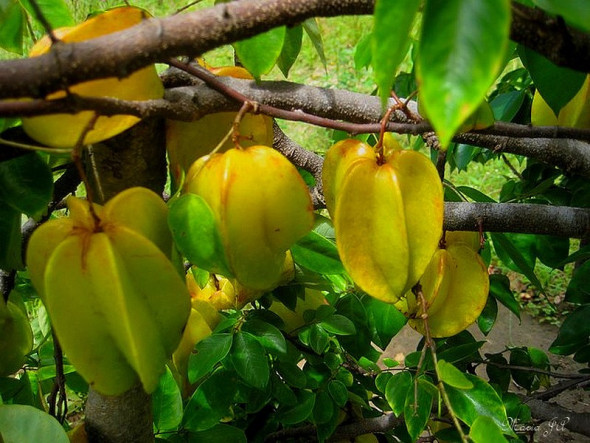 Averrhoa carambola – Star fruit tree
Averrhoa carambola – Star fruit tree
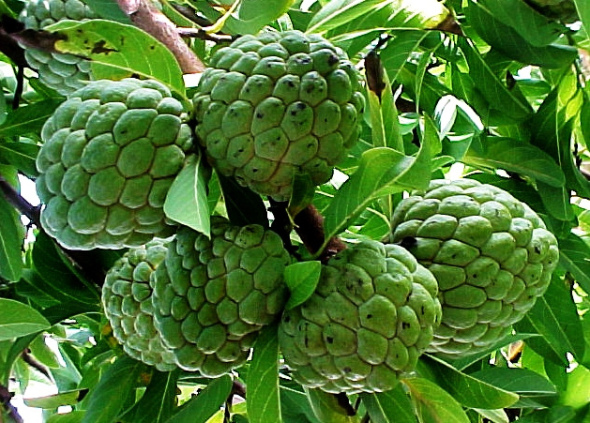 Thai custard apple fruit tree - Annona reticulata
Thai custard apple fruit tree - Annona reticulata
 Dragon fruit tree - Hylocereus undatus
Dragon fruit tree - Hylocereus undatus
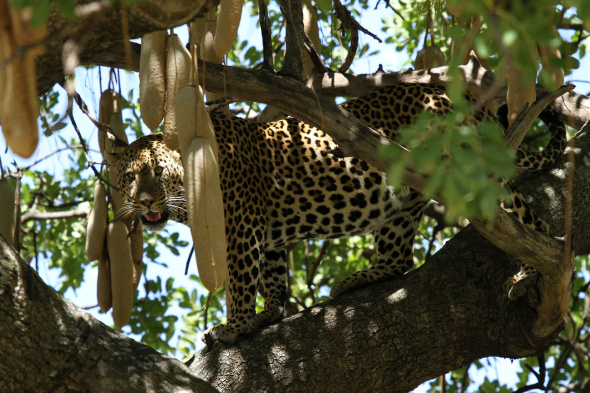 Sausage tree - Kigelia pinnata
Sausage tree - Kigelia pinnata
There are many species of tree that one can plant for earth day April 22nd 2013, and you can pick from thousands of different species that range from large “sub shrub tree’s” to actual tree’s themselves. The ten above are native to Europe, Asia and Australia and Africa. There are some important things you must remember though before planting a tree.
- Never plant a deciduous tree above a pond – Never plant a tree to close to neighbours houses that could later on obscure their view/infringe on their human rights
- Trees that have a large spread and can exceed 20 feet – We advise that you DO NOT plant within 20 metres of your home
- Never plant trees next to gas, water, electric, sewage or underground telecom lines as damage to them from the tree’s tap or lateral roots could end up with you facing a hefty bill
- Before you plant a tree in a public park you MUST always obtain permission of the parks officer or local municipality council/s
- Don’t plant trees to close to “structures” such as house’s or fences
- Please make sure that you care for tree, you plant it correctly as shown in the video below, and that you always maintain the tree as to not cause neighbour or other conflict from over hanging branches
- Do not disturb ANY bat or WILD BIRD populations that nest within the tree’s as of protection orders and Animal Welfare Act
- Do not plant trees that have very small girths (thin main trunk circumference) next to houses such as Birch, Cherry or Eucalyptus. High winds could cause the tree’s to topple onto you’re or your neighbours’ homes causing damage to loss of life or human injury
- Trees are not plants, you cannot just prune a tree or dig it up, we recommend that you educate yourself on how to maintain trees or every year after the tree is at a semi mature height (20 feet) that you call in an arboriculture expert (tree surgeon) that specialises in trees, pests and diseases
- Never spray weed killers next to the tress or on them
- Should you notice pests and diseases, strange leaf discolouration, leaf mites, sudden trunk death that you call you tree surgeon immediately
- Water your sapling in the summer 2-3 times a week of at least 5-6 gallons of water
For more information you can contact our botanical teams at
Director and International Team of Delegates and Ambassadors
www.international-animalrescue-foundation.org.uk
Environmentalism - Chapter 33 April 22nd EARTH DAY
Good day everyone, thank you all that took part in Earth Hour March just gone internationally and locally however don’t forget that we have another world event day just a few weeks around the corner and that is Earth Day April the 22nd which we celebrate in style but was a little disappointed that some international and European governments didn’t celebrate to even few non-profit organisations.
Planet earth is suffering dearly and just making these simple yet large small environmental changes every now and then or even every day you’re contributing to slowing climate change destruction and reducing you carbon foot print all of which helps to increase a much healthier planet and soul.
International Animal Rescue Foundation © believes that Earth Day should be an everyday event and just imagine if we could utilise these simple changes below every day that would not just benefit ourselves and our children but also our flora, fauna, water, forestry and air quality too as well as a more comfortable way of living.
So were going to keep the write up very simple whilst demonstrating a few out of the one hundred and thirteen simple changes that we have chosen from our own events of which we would like you to practice.
Utilising these everyday changes will help to decrease and increase the following if we all band together and work as an international team of united citizens, conservationist’s and youth alike. Together we can make change happen and together we will.
Practising these every day simple steps below will help you and Mother Nature by;
- Decreasing atmospheric, land and marine pollution.
- Increase healthier oxygen intake and overall air quality.
- Decrease the melting of glaciers within Canada and Antarctica.
- Decrease landfills and marine wastes sites.
- Increase wildlife from insects, mammals, organism’s, plants to bees and bats and aquatics.
- Decrease your weight thus increasing your immune system and overall health.
- Reduce your energy consumption by almost 40% or even more.
- Preserve our tropical rainforests and endangered species of primates, Elephants and more
So how can we make these changes happen? Well your already utilising them now by reading and educating yourself and also these easy to adjust and adapt steps are cost effective of which is light on the pocket too thus giving you more money for your children and future retirement.
Mother Nature is crying and has been damaged by irresponsible governments and those that show negativity. Thirty years ago could of easily slowed down “global warming” however because of government ignorance and human overpopulation to mass increase in carbon emissions regrettably global warming has now altered thus changing to “climate change” from which there is no (stopping this trend now). However we can as united global green citizens slow the change.
International Animal Rescue Foundation’s © mission statement on climate change is simple we learn to adapt and not to fight the change, by fighting the change we will only lose thus increasing damage to Mother Nature more and ourselves. The damage has been done, and if you view the documentation through this site you will view how our atmospheric and climate change destruction has worsened since the early 1980’s that’s caused billions of dollars in economic damage thus pushing many species of mammalians to reptilians and aquatics plants and trees to extinction.
We have placed a handful of simple changes that you can utilise below; make sure you’re ready as April the 22nd 2013 is almost upon us;
Preserving energy within the home and business;
- Block gaps under doors to stop draughts.
- Turn off the lights when you’re not using them.
- Buy energy-efficient compact fluorescent lights when you replace bulbs.
- Use a power strip to turn off stand-by power in electronics and appliances.
- Select the most energy-efficient appliances.
- Walk, ride your bike, take public transportation or carpool when possible.
- If purchasing a vehicle, choose an energy-efficient one to reduce gasoline bills and emissions.
- Choose efficient windows and insulation for your home to save energy and money.
- Maintain proper tyre pressure to maximize your vehicle’s gas mileage.
- Learn more about your government’s actions to improve energy efficiency.
- Add energy performance to your selection criteria when buying or renting a house or apartment.
Preserving water loss in the home and business;
- Check faucets and pipes for leaks
A small drip from a worn faucet washer can waste 20 gallons of water per day. Larger leaks can waste hundreds of gallons.
- Don’t use the toilet as an ashtray or wastebasket
Every time you flush a cigarette butt, facial tissue or other small bit of trash, five to seven gallons of water is wasted.
- Check your toilets for leaks
Put a little food colouring in your toilet tank. If, without flushing, the colour begins to appear in the bowl within 30 minutes, you have a leak that should be repaired immediately. Most replacement parts are inexpensive and easy to install.
- Use your water meter to check for hidden water leaks
Read the house water meter before and after a two-hour period when no water is being used. If the meter does not read exactly the same, there is a leak.
- Install water-saving shower heads and low-flow faucet aerators
Inexpensive water-saving low-flow shower heads or restrictors are easy for the homeowner to install. Also, long, hot showers can use five to ten gallons every unneeded minute. Limit your showers to the time it takes to soap up, wash down and rinse off. “Low-flow” means it uses less than 2.5 gallons per minute.
You can easily install a Shower Start showerhead, or add a Shower Start converter to existing showerheads, which automatically pauses a running shower once it gets warm. Also, all household faucets should be fit with aerators. This single best home water conservation method is also the cheapest!
- Put plastic bottles or float booster in your toilet tank
To cut down on water waste, put an inch or two of sand or pebbles inside each of two plastic bottles to weigh them down. Fill the bottles with water, screw the lids on, and put them in your toilet tank, safely away from the operating mechanisms. Or, buy an inexpensive tank bank or float booster. This may save ten or more gallons of water per day.
Be sure at least 3 gallons of water remain in the tank so it will flush properly. If there is not enough water to get a proper flush, users will hold the lever down too long or do multiple flushes to get rid of waste. Two flushing’s at 1.4 gallons is worse than a single 2.0 gallon flush. A better suggestion would be to buy an adjustable toilet flapper that allows for adjustment of the flush per use. Then the user can adjust the flush rate to the minimum per flush setting that achieves a single good flush each time.
For new installations, consider buying “low flush” toilets, which use 1 to 2 gallons per flush instead of the usual 3 to 5 gallons.
Replacing an 18 litre per flush toilet with an ultra-low volume (ULV) 6 litre flush model represents a 70% savings in water flushed and will cut indoor water use by about 30%.
- Insulate your water pipes.
It’s easy and inexpensive to insulate your water pipes with pre-slit foam pipe insulation. You’ll get hot water faster plus avoid wasting water while it heats up.
- Take shorter showers.
One way to cut down on water use is to turn off the shower after soaping up, then turn it back on to rinse. A four-minute shower uses approximately 20 to 40 gallons of water.
- Turn off the water after you wet your toothbrush
There is no need to keep the water running while brushing your teeth. Just wet your brush and fill a glass for mouth rinsing.
- Rinse your razor in the sink
Fill the sink with a few inches of warm water. This will rinse your razor just as well as running water, with far less waste of water.
- Use your dishwasher and clothes washer for only full loads
Automatic dishwashers and clothes washers should be fully loaded for optimum water conservation. Most makers of dishwashing soap recommend not pre-rinsing dishes which is a big water savings.
With clothes washers, avoid the permanent press cycle, which uses an added 20 litres (5 gallons) for the extra rinse. For partial loads, adjust water levels to match the size of the load. Replace old clothes washers. New Energy Star rated washers use 35 - 50% less water and 50% less energy per load. If you’re in the market for a new clothes washer, consider buying a water-saving frontload washer.
- Minimize use of kitchen sink garbage disposal units
In-sink ‘garbage wasters’ require lots of water to operate properly, and also add considerably to the volume of solids in a septic tank which can lead to maintenance problems. Start a compost pile as an alternate method of disposing food waste.
- When washing dishes by hand, don’t leave the water running for rinsing
If you have a double-basin, fill one with soapy water and one with rinse water. If you have a single-basin sink, gather washed dishes in a dish rack and rinse them with a spray device or a panful of hot water. Dual-swivel aerators are available to make this easier. If using a dishwasher, there is usually no need to pre-rinse the dishes.
- Don’t let the faucet run while you clean vegetables
Just rinse them in a stoppered sink or a pan of clean water. Use a dual-setting aerator.
- Keep a bottle of drinking water in the fridge.
Running tap water to cool it off for drinking water is wasteful. Store drinking water in the fridge in a safe drinking bottle. If you are filling water bottles to bring along on outdoor hikes, consider buying a Life Straw personal water filter which enables users to drink water safely from rivers or lakes or any available body of water.
Taking the 30 day Vegetarian challenge;
Vegetarian or not, change the way you think about food, experiment and try new “meat-free” dishes in your diet.
Studies have shown that vegetarians (following a well-balanced low-fat high-fibre vegetarian diet) often have lower incidence of coronary artery disease, hypertension, obesity and some forms of cancer.
A vegetarian diet tends to be lower in total fat, and vegetarians tend to eat proportionally more polyunsaturated fat to saturated fat compared with non-vegetarians. (Animal products are the major sources of dietary saturated fat).
Vegetarians avoid meat, poultry, game, fish and slaughterhouse by-products such as gelatine and animal fats. The staples of the vegetarian diet are fruits, vegetables, legumes, grains, seeds and nuts. Most vegetarians eat dairy products and free-range eggs.
- Fruitarians: Avoid all animal products and processed foods.
- Vegans: Avoid all animal products.
- Lacto-vegetarians: Eat dairy products but not eggs.
- Lacto-ovo-vegetarians: Eat both dairy products and eggs.
- Semi-vegetarians: Eat fish and/or chicken but no red meat. They are not officially classed as vegetarians. (International Animal Rescue Foundation © has placed this option for those that are still unsure on this diet, are located within geographical continents where purchasing non-meat foods is not readily available daily, or for our younger generation that are wanting to start gradually) We see this as the most professional start for those that are concerned or may have eating disorders and/or phobias. However if you’re still unsure you can view our page here and speak to our expert nutritionists https://www.facebook.com/pages/Vegan-and-Vegetarian-foods-to-promote-healthy-living/193221637452747?fref=ts Just simply log in to Facebook.
Please note that International Animal Rescue Foundation is a non-extremist veganism or animal rights “group”. We are an animal and environmental organisation that has to be seen as being fair and helping those that want to change thus not forcing change upon them. We have managed to help since forming our health eating page 94 people turn to a healthy vegan and vegetarian diet since founding the main healthy eating organisation. You can also check our scrumptious thirty brain foods that are not just good for one’s brain but also your immune system. Take a look - http://www.international-animalrescue-foundation.org.uk/brain-food-for-thought/ You can also view and read in more detail the photographic album devised by our African Ambassador Miss Shaka Farthing here https://www.facebook.com/media/set/?set=a.306429822798594.71607.193221637452747&type=3
Credits Mr Phil Muriel - With much thanks and appreciation to this wonderful artist below.. Please log on to I Tunes to purchase his music. This is a fantastic piece of music incorporated with a story too and picturesque video. Thank you Mr Muriel
A vegetarian diet can be a very healthy option but it is important to ensure it is well balanced. You could stuff your face with chips and chocolate at every meal and be vegetarian but you wouldn’t be doing your health much good.
- Staples of a Vegetarian Diet
- A balanced vegetarian diet should include:
- Grains and cereals: Wholegrain bread, brown rice, whole wheat pasta, muesli.
- Legumes, nuts and seeds: Soya beans. kidney beans, split peas, lentils, almonds, cashews, sesame seeds
- Fruit and vegetables: As much as you want - think variety. Try new fruits and vegetables and include them in your diet every day
- Dairy or soya products: Look out for fat free and reduced calorie options for milk, yoghurts, and cheeses.
A typical vegetarian diet closely matches expert dietary recommendations for healthy eating, being low in saturated fat and high in fibre, complex carbohydrates, and fresh fruit and vegetables. As long as you eat a variety of foods you will be getting all the nutrients you need.
Try A Little Vegetarianism (for those that are unsure)
Abandon the idea that you have to eat meat every day and try a couple of meat-free days each week. You don’t have to be a vegetarian to enjoy vegetarian dishes.
Supermarkets, restaurants and fast food outlets all are now stocking a wide range of vegetarian options. Many “meat-free” dishes still have the meaty consistency, and are significantly lower in fat and calories than their counterparts. (Our panel of tasters have often failed to spot the hidden vegetarian option!)
Reducing carbon emissions;
- Buy organic and local.
When possible, buy organic or “fair trade.” There’s a better chance the food was grown in an eco-friendly way, and if it’s locally grown, it didn’t have to travel that far. This also goes for those double lattes — coffee often has a large carbon footprint because of the distance those beans had to travel to get here, and how they were produced. Also, try eating at restaurants that serve locally produced or seasonal foods.
- Pay attention to packaging.
When out shopping, try to go to stores or co-ops that keep packaging to a minimum. For example, you may choose to buy the loose tomatoes rather than boxed or plastic-wrapped tomatoes. Also, take reusable bags to the grocery store. When it comes to resources, plastic is better than paper — but a reusable cloth tote-style bag is better still.
- Ditch bottled water.
Bottled water has a huge carbon footprint — it’s bottled at one location in small plastic bottles and shipped all over. Try buying a reusable water bottle or canteen for your water. Also, a lot of restaurants have made the move from offering fancy bottled water, usually imported from an exotic source, to using in-house filtration systems that make tap water a good choice. Many plastic water bottles are recycled, but most are not, making the footprint even bigger.
- Energy-proof your home.
We’re not talking major upgrades here… Make sure your entire windows close properly and that the attic in your home is properly insulated. This can save you big bucks on your energy bill. Also, keep your heating and cooling systems properly maintained, and switch to reusable filters when possible. Try switching from incandescent to compact florescent light bulbs. Compact florescent light bulbs use about 75 per cent less energy than our normal light bulbs and last much longer. Compared to regular bulbs, the fluorescents are more expensive, but they will eventually pay for themselves due to lower energy costs.
- Go native.
Use native plant species to landscape around your home or business. The plants will probably grow better in a familiar environment, and the plants may also get shipped a shorter distance to get to your local nursery. Also, use organic soil when planting — it’s made using more eco-friendly methods, and uses less resources. And remember, green plants are a good way to offset carbon. So plant something, anything — it helps.
- Window shop.
If you have the urge to spend, try window shopping or browsing first. This helps ensure you are only buying things you really need, or really want, and you’re not just impulse buying. Remember, every item in a store, no matter how small, has a footprint — so if we are conscious consumers, we can reduce our own footprint and the overall footprint of our nation.
- Take a direct flight.
If you need to travel by airplane, try taking a direct flight when at all possible. Your impact is reduced when you take one flight, as opposed to hopping on a couple or more passenger jets to reach your final destination. You might also feel a little less harried when you arrive, because changing planes can be a real hassle.
- Switch water heaters to vacation mode.
Most water heaters have a “vacation” setting for when you are away from home for an extended period of time. Switching to that “away” mode still keeps the water warm, but will not use the energy it takes to keep a tank full of piping-hot water. Enjoy your vacation even more, knowing that you’re saving money and reducing your footprint.
- Unplug it!
Unplug appliances that you don’t use frequently. Most electronics have a standby mode that siphons energy even when not in use. Cell phone chargers, laptops, televisions, stereos — there’s a whole list of items that should be unplugged when not in use. Try using a power strip for groups of electronic items. One flick of the switch and it’s all off.
- Chuck your microwave.
Admittedly, this is a bit drastic. But this speaks more to those convenient frozen dinners some rely on because of their busy schedules. A freezer full of HEALTHY meals is actually more energy-intensive (FACT) — it costs more to freeze foods, ship them cold, display them frozen in the grocery store and keep them frozen in our homes. So while the modern convenience of the microwave and the Lean Cuisine is enticing, it’s much more resource-intensive. Cook fresh food when you can, and you’ll also find yourself eating out less often.
- Use cold water.
No, not in the shower but maybe in the washer, try using cold water to launder things that don’t need to be cleaned in hot or warm water. It takes a lot of energy to heat up water — multiply that by the number of loads, and that’s a big footprint. Most major detergent makers sell detergents designed to have the same cleaning power as with regular soap. Try washing mixed loads in cold water, too.
- Have the family over.
Family gatherings are a good way to spend some quality time with loved ones, with very little carbon impact. Cooking and entertaining for larger groups is more efficient and, per person, a lot less expensive. And who can put a price on these “carbon freebies”?
- Make time for errands.
A lot of us try to run errands in-between work and other commitments. Try bundling errands together to reduce how far you need to travel. Going back-and-forth to the same part of town on different days to run errands uses more gas than if you planned and did everything in the same area all at once. And if you really want to make it a “carbon freebie,” try carpooling and running errands with a buddy.
- The Three Rs: Reduce, Reuse, And Recycle – International Animal Rescue Foundation’s © environmental mission statement.
It seems like something from a kid’s sing-a-long, but sometimes we lose sight of just how much we buy. Try buying less, and reusing and fixing things when you can instead of buying new. And for a lot of people, recycling is as easy as rolling the trash bin to the curb. Just remember to do it at work, too.
Celebrate how your ancestors would off
Grow your own organic vegetables;
Growing your own organic vegetables decreases agricultural pollution, pesticides, insecticides, to CCD (Colony Collapse Disorder) that’s resulted in billions of European, American and Asian honey bee’s perishing;
- A VEGGIE/FRUIT GARDEN REDUCES THE CARBON FOOT PRINTAND GLOBAL WARMING.
- REDUCES THE CONSUMPTION AND THEREFORE PRODUCTION OF CHEMICAL FERTILIZERS AS LESS DEMAND WILL BE FOLLOWED BY LESS SUPPLY.IT INCREASES THE CHEMICALLY FREE PRODUCE THOUGH!
- IMPROVES ON THE HEALTHY DIET OF ALL THE FAMILY AS IT INTRODUCES HOME GROWN ORGANIC FOOD HARVESTED RIGHT FROM THE BACKYARD.
- SAVES ON THE GROCERY BILL -AND MEDICALL BILL AS HEATH IMPROVES -AND GROCERY SHOPPING DROPPS.
- BEAUTIFICATION IMPACTS ON THE NEIGHBORHOOD INCREASES AS MORE GARDENS ARE PLANTED.THEY BEAUTIFY YOUR CITY!
- QUALITY FAMILY TIME INCREASES AS MORE MEMBERS COME ALONG WORKING THE GARDEN .COMMUNICATION AND SOCIALIZATION EFFECT PAYS IN BETTER FAMILY INTERACTION.
- COMMUNITY GARDENS AS WELL AS HOME GARDENS FOSTER BONDS BEYOND THE FENCES.THEY PROMOTE DIALOGUE, CULTURAL DIVERSITY, TOLERANCE AND PROVIDE HEALTHY GREENS TO FAMILIES OF LESSER INCOME AND MEANS!
- GET THE LOCAL YOUTH AT SCHOOLS AND HOME ENGAGED IN PRODUCTIVE SOCIAL PROJECTS WITH LESS TIME SPENT ON TV, INTERNET GAMES ETC. PROVIDE OPPORTUNITIES TO LEARN ABOUT RECYCLING, LEADERSHIP, DIVERSITY, SUSTAINABILITY ETC
- PROVIDE AN EDUCATIONAL GROUND TO LEARN ABOUT OUTDOOR ACTIVITIES THAT ARE PRODUCTIVE LIKE GARDENING SKILLS, COMPOSTING.
- SUPPORT THR ECHO-SYSTEM,CREATE BIODIVERSITY AND BE A PRO-ACTIVE MEMBER IN THE NEW PARADIGM OF PERMACULTURE,SUSTAINABILITY AND GREEN ECOLOGY
Plant a tree or even a hedgerow thus increasing wildlife to your area;
Tree planting is the most popular Earth Day event and one of the most common activities people associate with helping the Earth. Millions of trees are planted by Canadians each year. Planting is an act of putting down roots and contributing to the future. The simple act of planting a tree, helps the environment in so many ways.
Trees undertake the following;
- Filter pollution from the air
- Help recycle water
- Prevent soil loss
- Create shade
- Give shelter from wind and rain
- Provide homes for animals
- Make food for humans and wildlife
- Provide an interesting, soothing, learning environment for children and your community and much more!
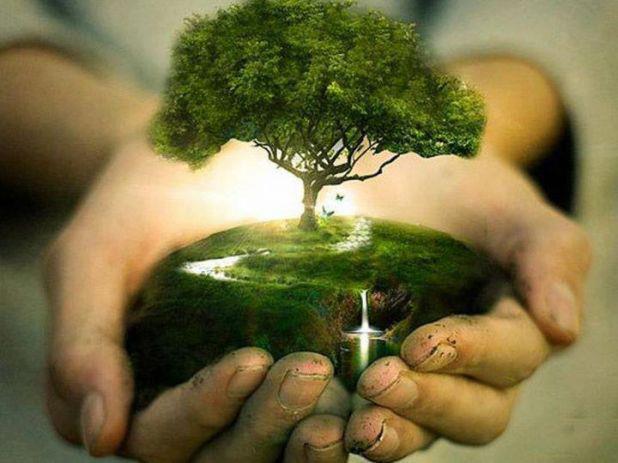
Smart cars;
Purchase a smart car if your living in city centres, this reduces your carbon footprint, increases your chances of parking, decreased road tax, no road tolls (Please check with the toll service) London, United Kingdom will not charge you that we are aware off;
Smart Cars are the vehicle that looks like they are small enough to be put into the back of an SUV and carried around. They are designed for maximum fuel efficiency, and regularly get 55 to 60 mpg. Although, due to their small size and delicate appearance, some people assume they are unsafe, they perform similarly to other small sedans in crash tests.
Mileage
- The primary advantage of a Smart Car, and the main attraction for the people who purchase one, is its gas mileage. According to the owners of the Southeast Smart Centre, they achieved 75 mpg with a Smart Car. While mileage during every day driving with loads, crosswinds and weather conditions is not likely to reach this level, the Smart Car is still one of the most efficient vehicles on the road today.
Environmental Benefits
- Along with the financial benefits of high fuel efficiency, Smart Cars emit fewer pollutants and particulates in the air, causing less damage to the environment than larger and less-efficient vehicles. Smart Cars still damage the environment, but their impact is less. In addition to their efficient gas mileage, they require fewer materials to manufacture due to their small size, and require less space and energy to dispose of when they are scrapped.
Parking
- The Smart Car truly shines when the driving is done and it’s time to park. Because it’s only 2.5 meters long, the Smart Car can fit into any standard parking spot with room to spare. In some areas with wide parking spots, a Smart Car can even be pulled directly into a parking space and parked perpendicularly, leaving space for another Smart Car.

Solar energy;
You already pay a lot for electricity today. In the future, you’ll pay even more. Nationwide, electricity rates have been increasing 6% per year over the last thirty years. When you go solar, you take control of your electricity costs and opt out of utility rate increases. You’ll save money with solar by locking in a lower rate for your electricity than you will pay for the next thirty years. Many customers start saving money right away.
If you use a lot of electricity and have a really high electric bill, you are likely to save a lot with solar right away. People who have smaller electric bills might not see substantial savings until a few years out.
Solar leases and PPAs allow you to invest just a small amount upfront and pay monthly, which means you, can start saving immediately. With a lease or a PPA, most people save a little bit immediately, and a lot over the long term. If you purchase a system or prepay a lease or PPA, your upfront investment will be bigger, so you won’t start saving until later.
- Is solar a good investment?
Yes. Of course, you’ll want to compare the return you’ll get from getting home solar to your other investment opportunities. When you get a solar proposal for your home, you’ll be able to see your projected monthly savings for twenty years. Those monthly savings will combine to surpass your original investment. All the money you save after that becomes your return on investment. Your return on investment will depend on the rate you pay upfront and some additional factors. You’ll be able to calculate your specific return on investment from any home solar proposal.
- How will solar affect my home value?
Adding solar panels can increase the resale value of your home and help it sell faster. (Please check though that by adding solar panels that you can take them with you, they do not decrease the price of your home should the second purchasers not want solar energy) Always read the small print and ensure that you shop and read online with regards to “solar panels and when you eventually come to selling or remarketing your home) International Animal Rescue Foundation © will answer these questions for you should you be unsure. Please email us at;
Help the environment with solar energy today
The electricity that most of us use is dirty. The majority of power in the United States is made from dirty fossil fuels including coal, gas, and oil. Burning fossil fuels releases toxic emissions, such as nitrogen oxide, sulphur dioxide, and heavy metals like mercury, along with soot, smoke, dust, and dirt. They contribute to smog and acid rain.
Electricity is the leading man made contributor to global warming in the U.S. Forty per cent of the United States’ greenhouse gas emissions come from power plants, with an additional fifteen per cent from home electricity consumption. This makes electricity the leading man made contributor to global warming. Every time we turn on our lights, we are creating pollution.
Solar allows you to power your home with clean, renewable energy. You can make a huge difference just by getting home solar. Over 15 years, solar on an average 3-bedroom home will offset over 80,000 lbs of carbon dioxide. This is the same as not driving 100,000 miles.
Going solar helps reduce dependence on foreign energy
Our increasing demand for energy has led to foreign wars, price spikes, and disasters like the Gulf oil spill. Aside from renewable sources, these sources are going to become more expensive and dangerous, and eventually run out. As we increase our dependence on foreign energy sources and funnel more money overseas, our national security and economy suffers.
These are some of the hand-picked yet useful energy efficient and environmentally friendly earth day events and jobs that you can now prepare for, for April 22nd Earth Day 2013. Utilising these useful and green alternatives doesn’t just save on the pocket it also preserves our earth thus decreasing climate change.
Please feel free to look through the sites documents on other environmentally friendly alternatives you’ll be amazed at the impacts you and your family can have on Mother Nature.
Thank you for reading
Dr J C Dimetri Director & International Nation Ambassador’s
Working for a greener future – Preserving natural biodiversity for generations to come.
www.international-animalrescue-foundation.org.uk

